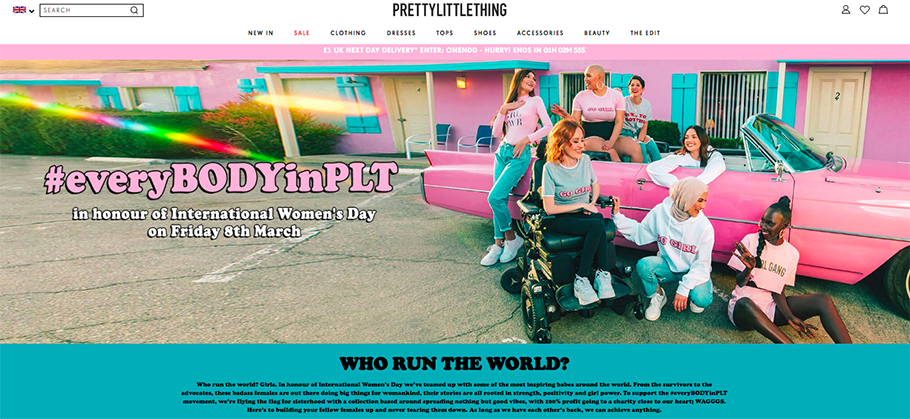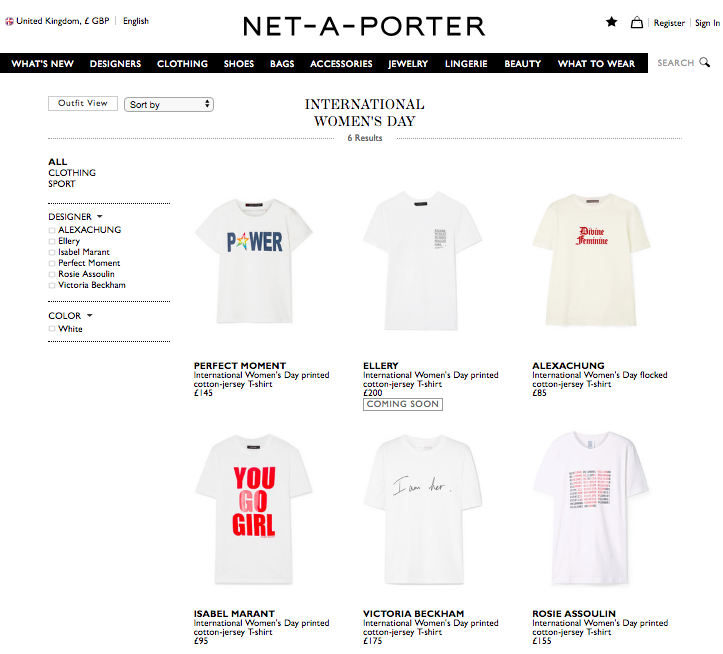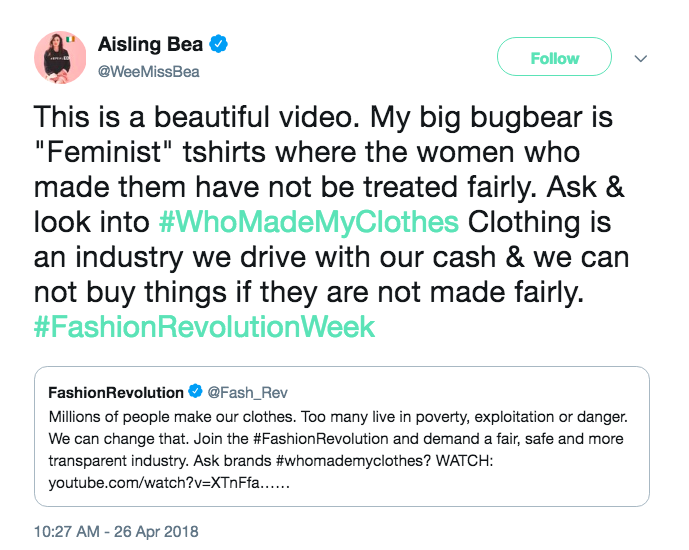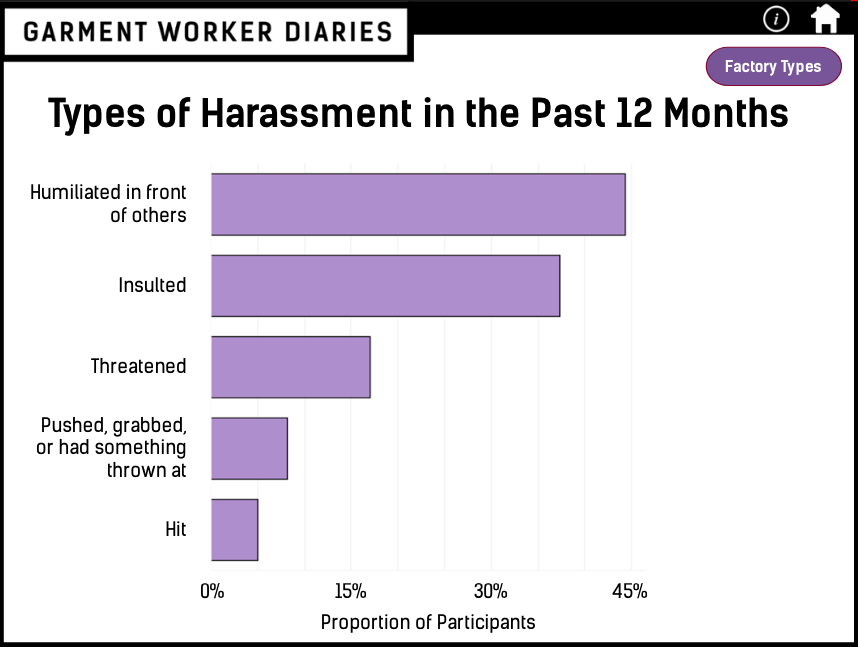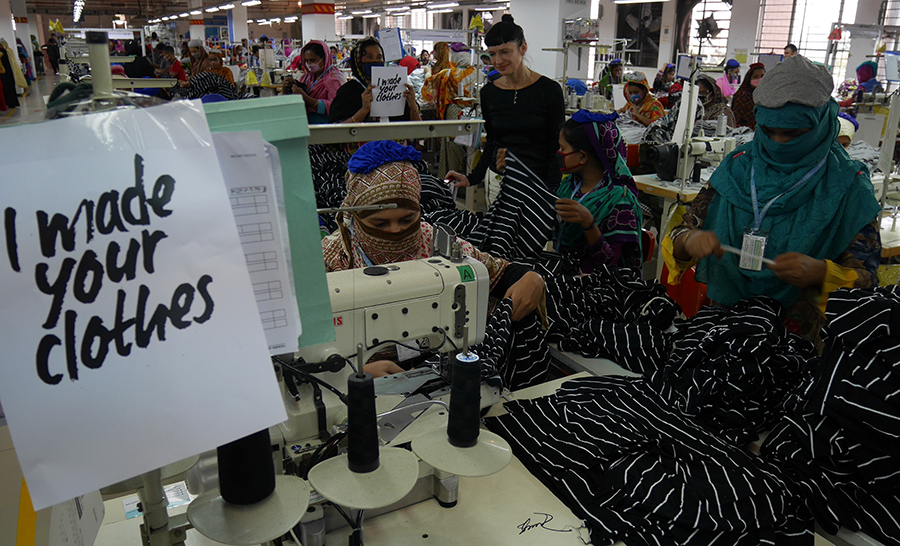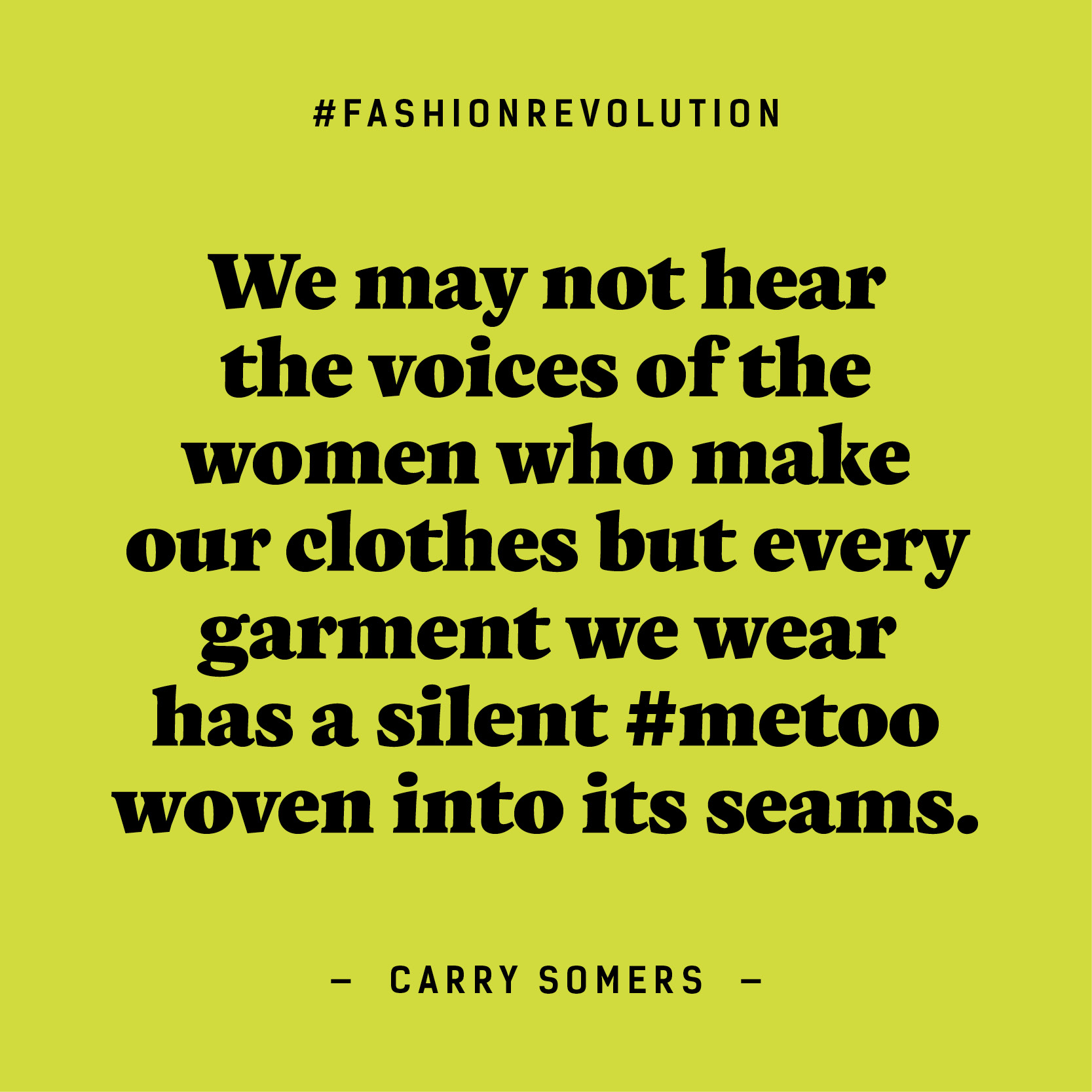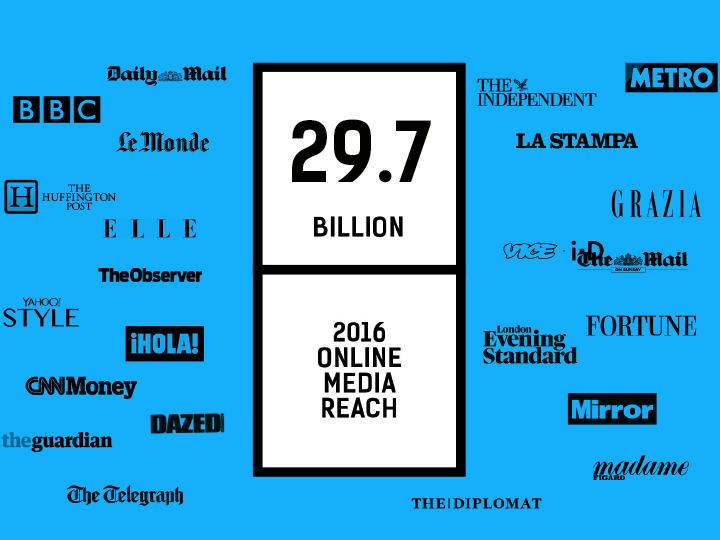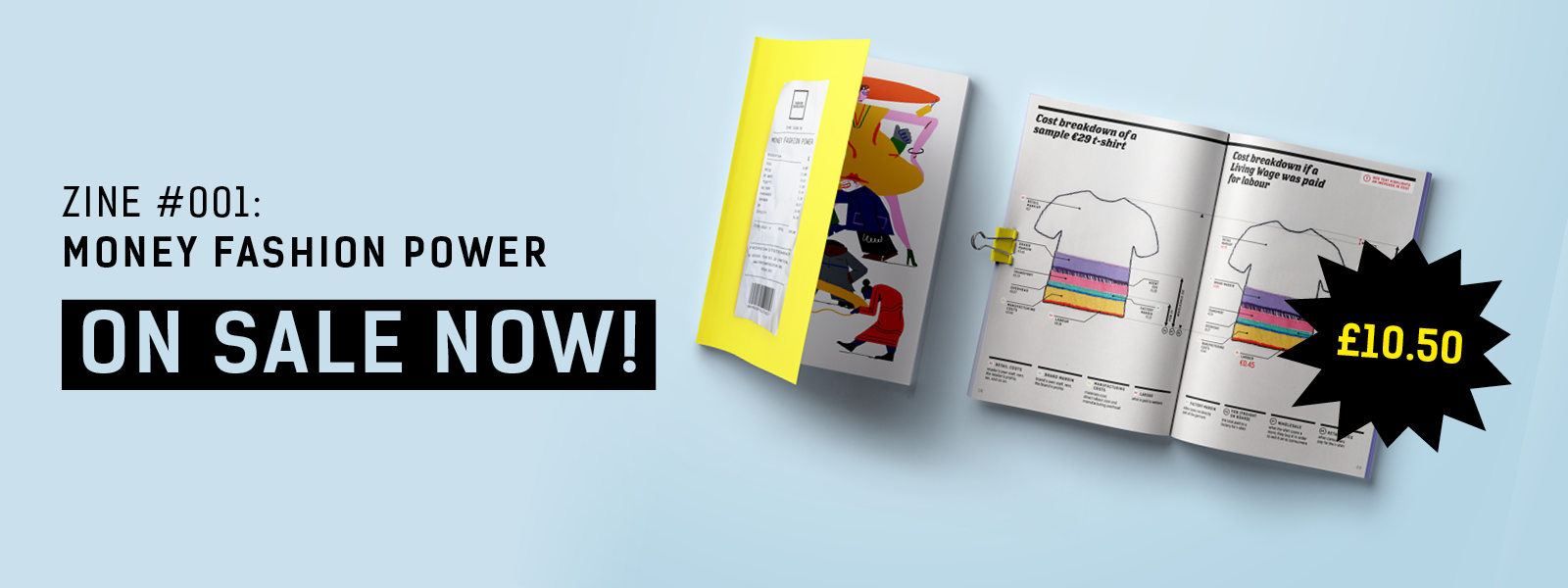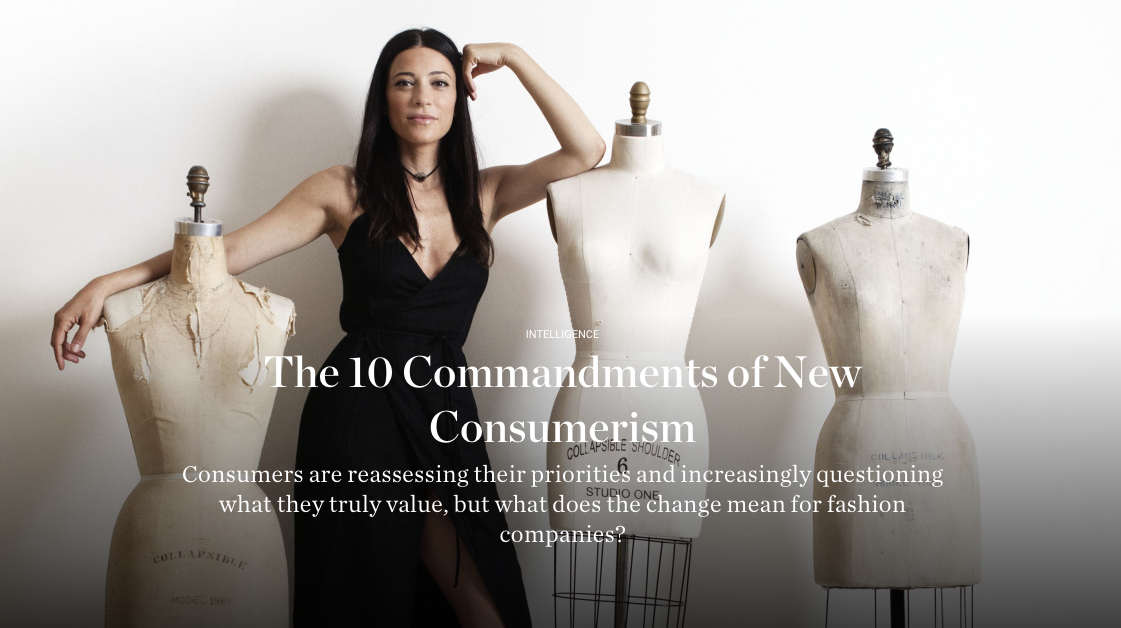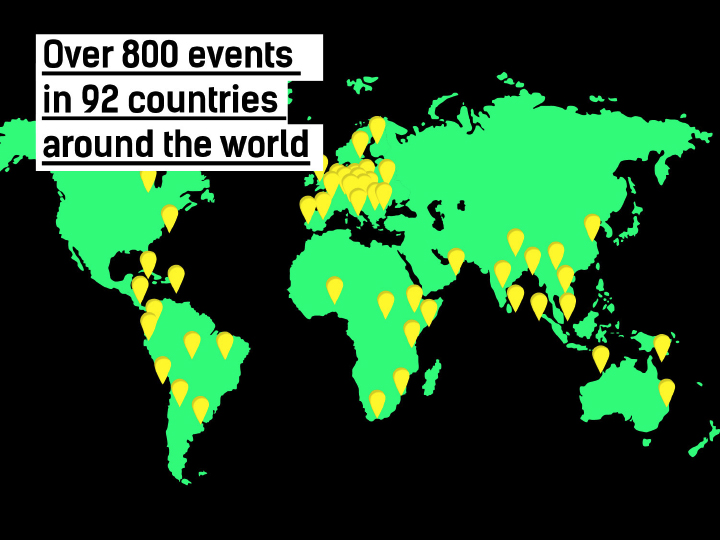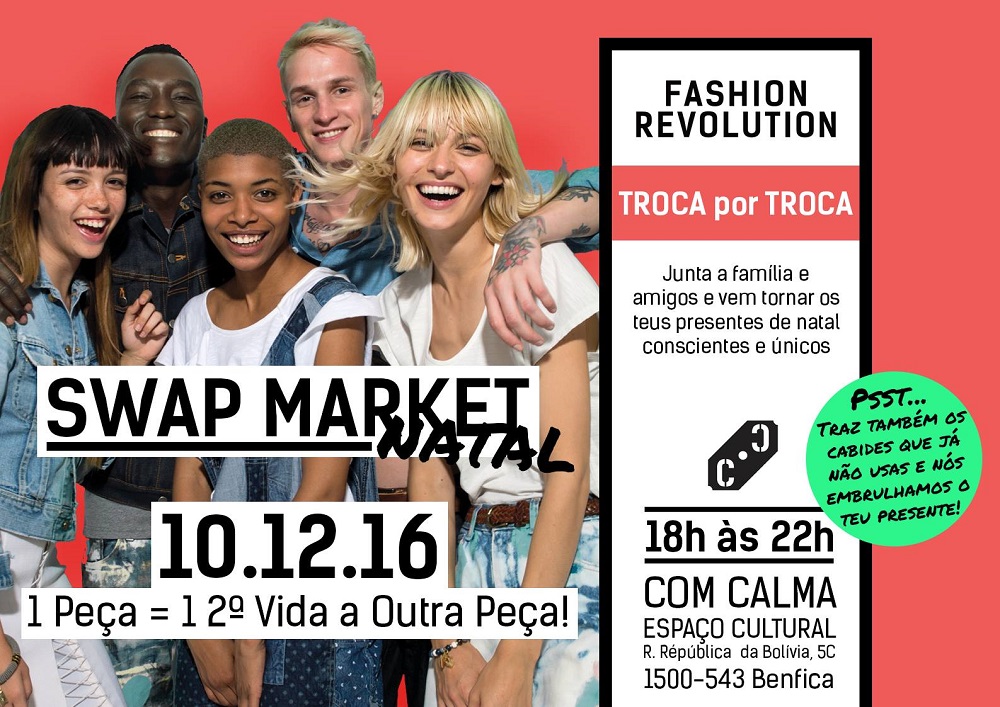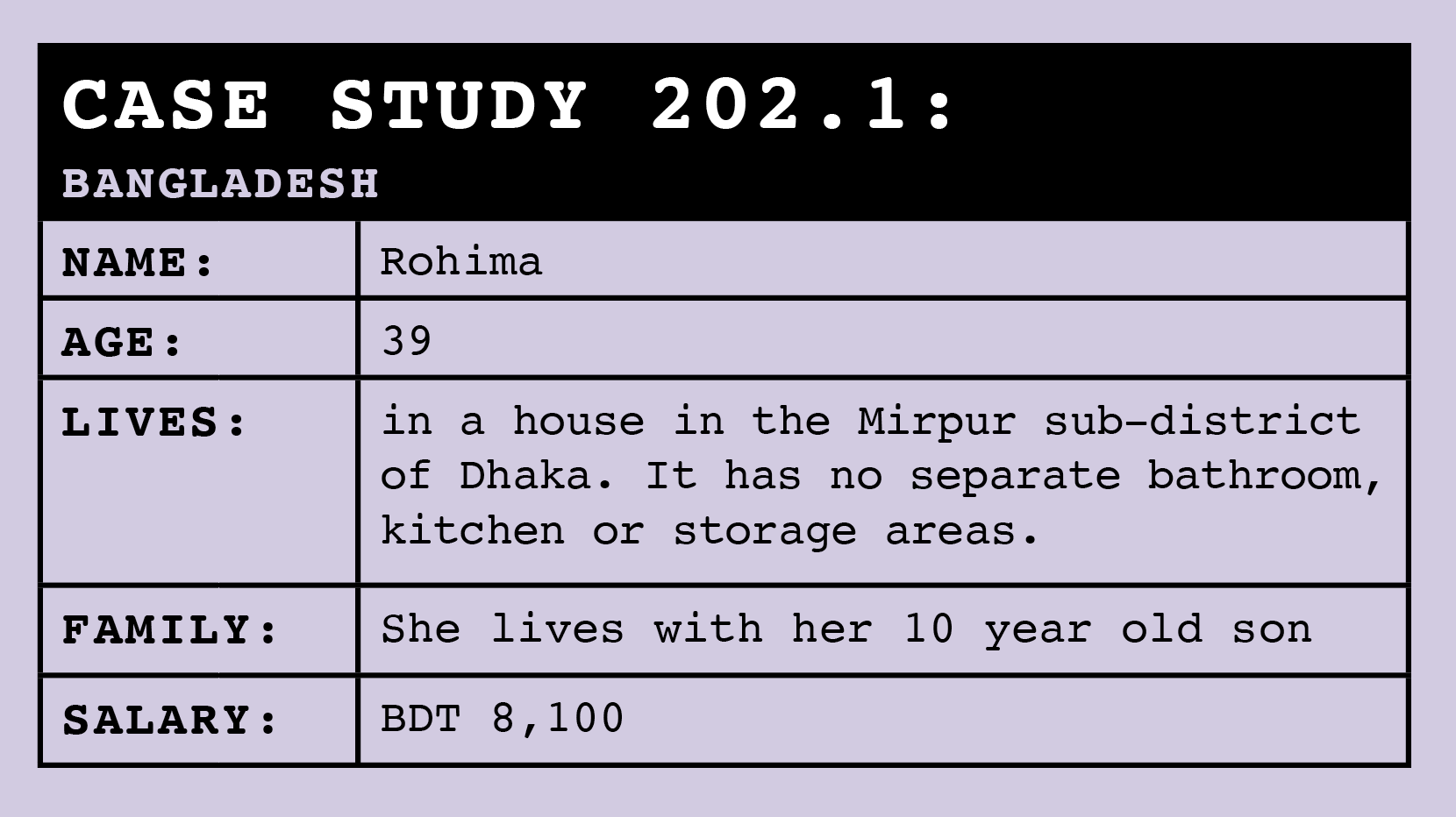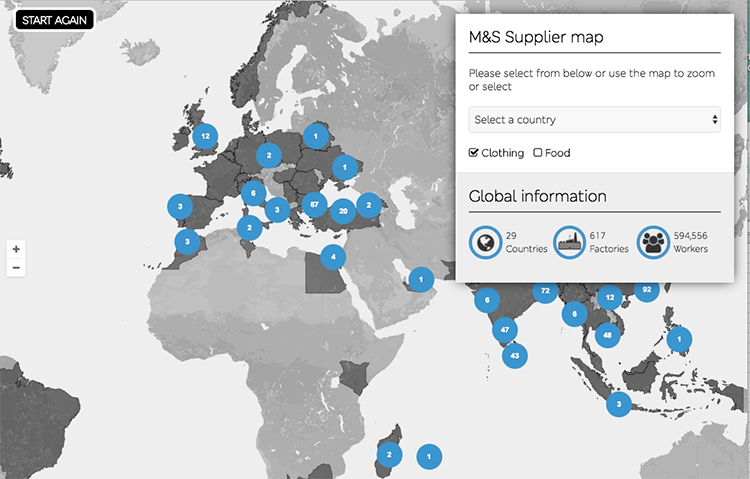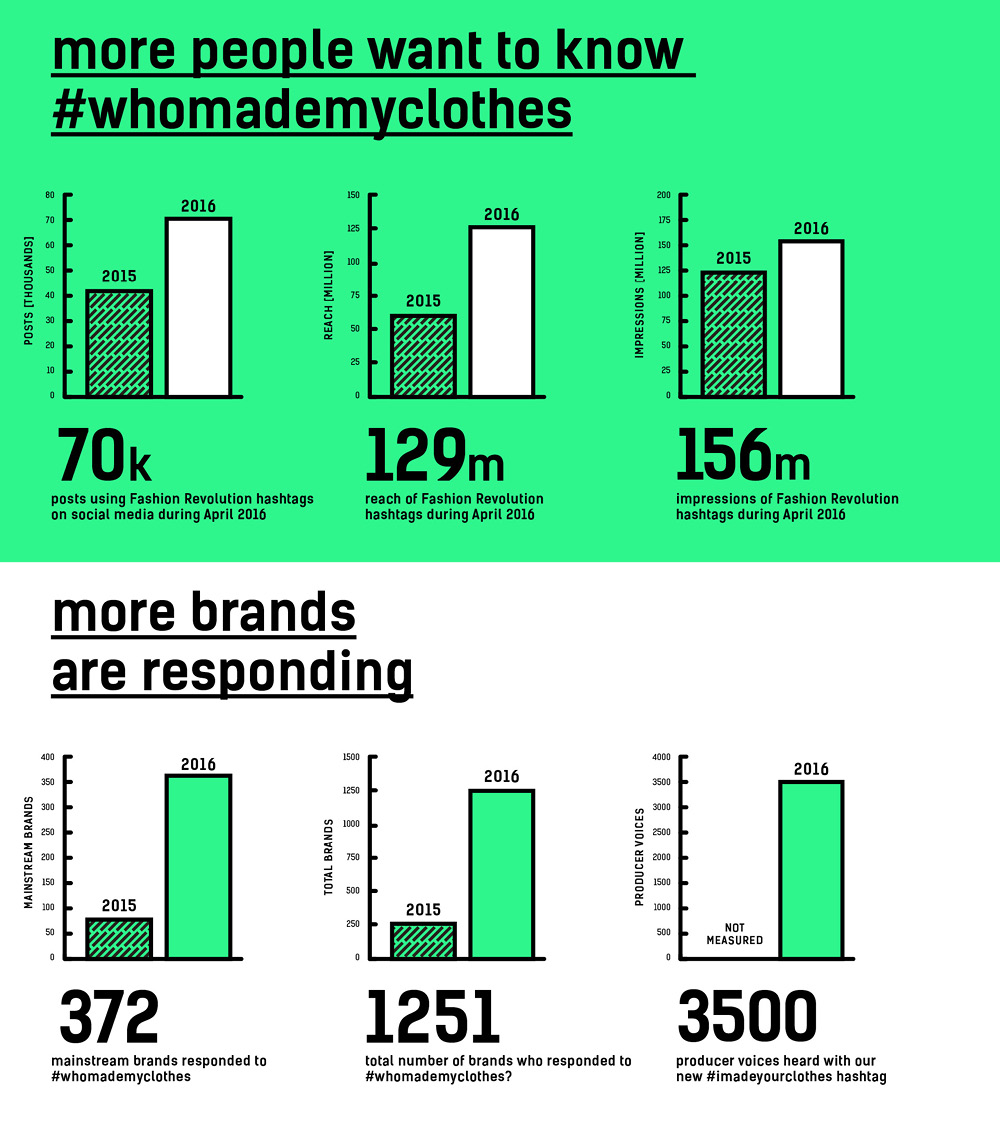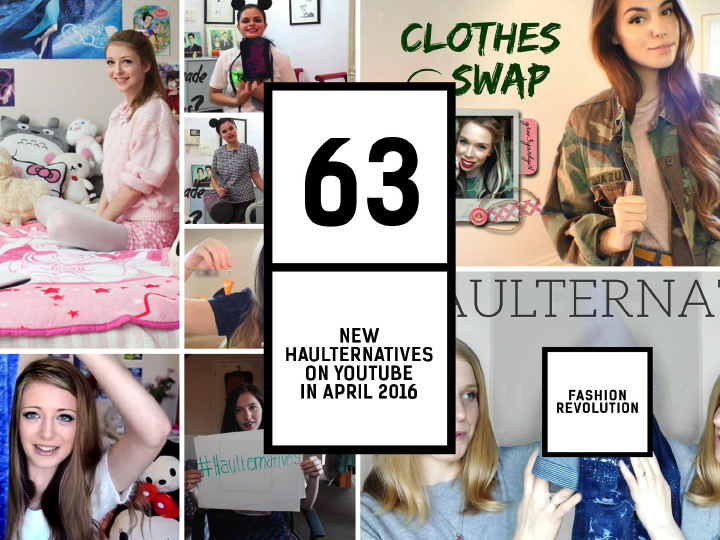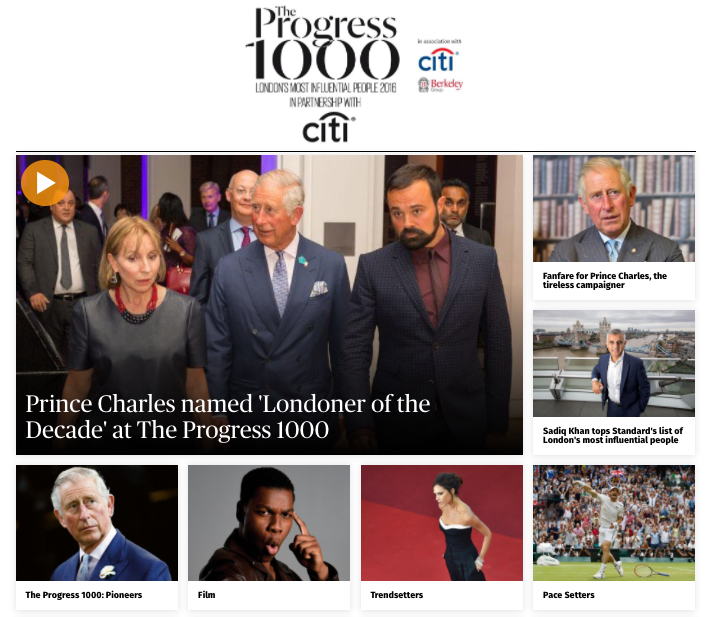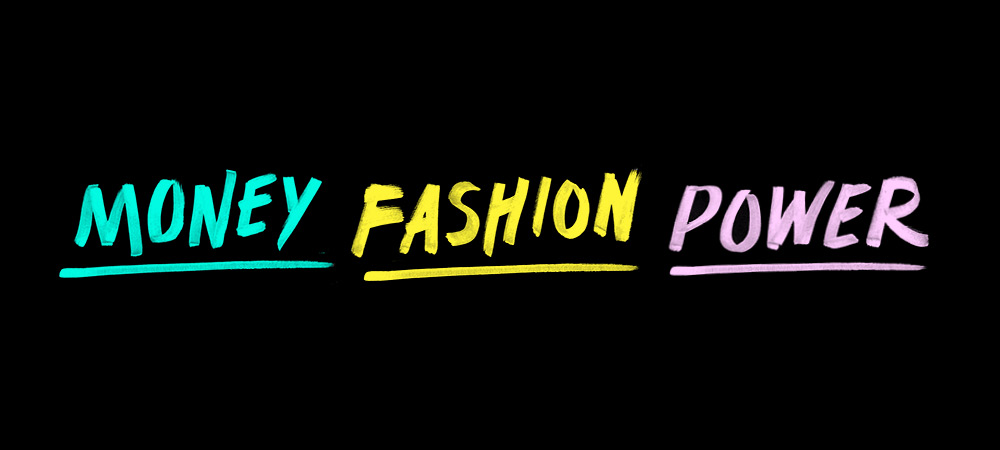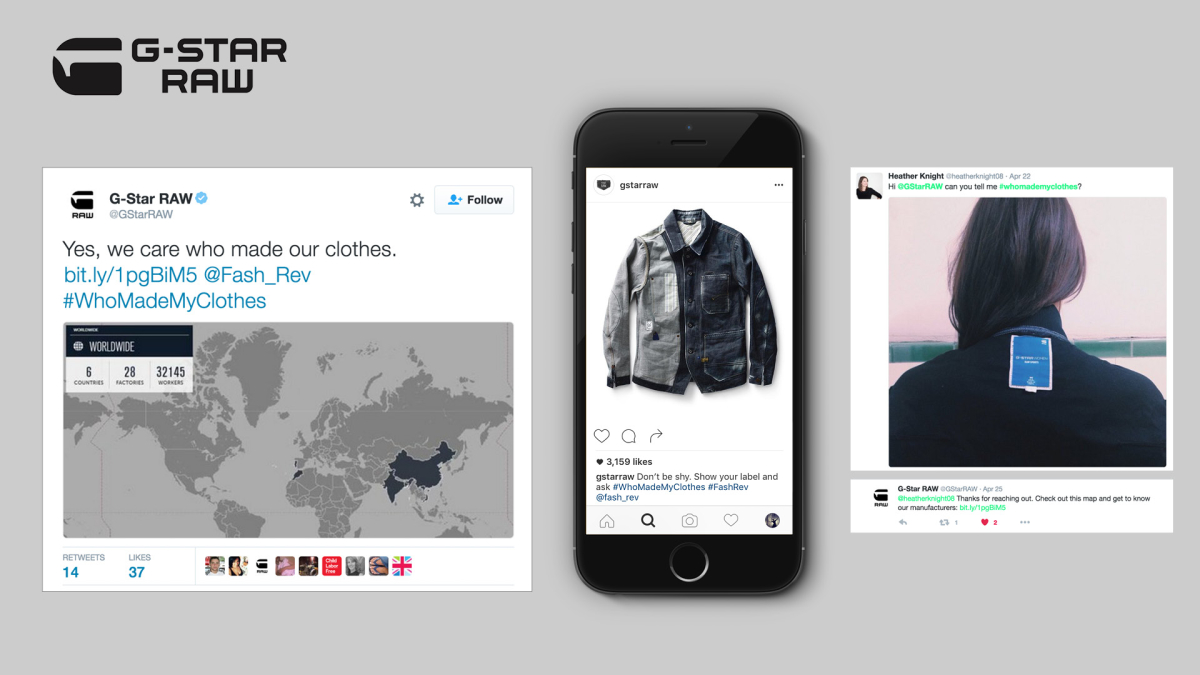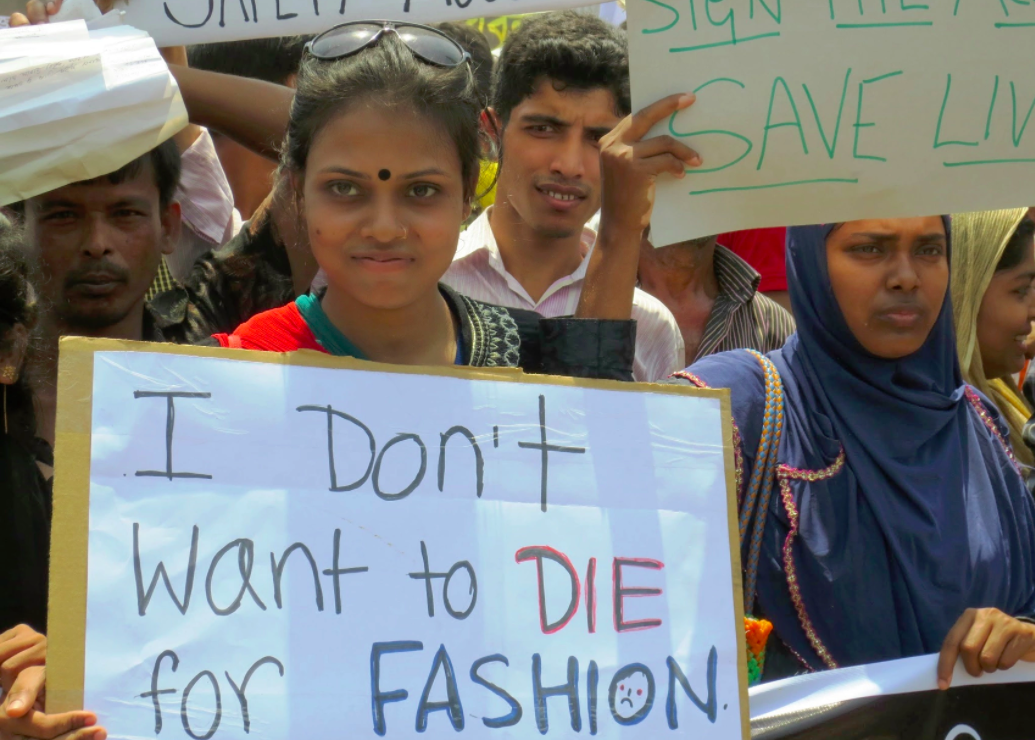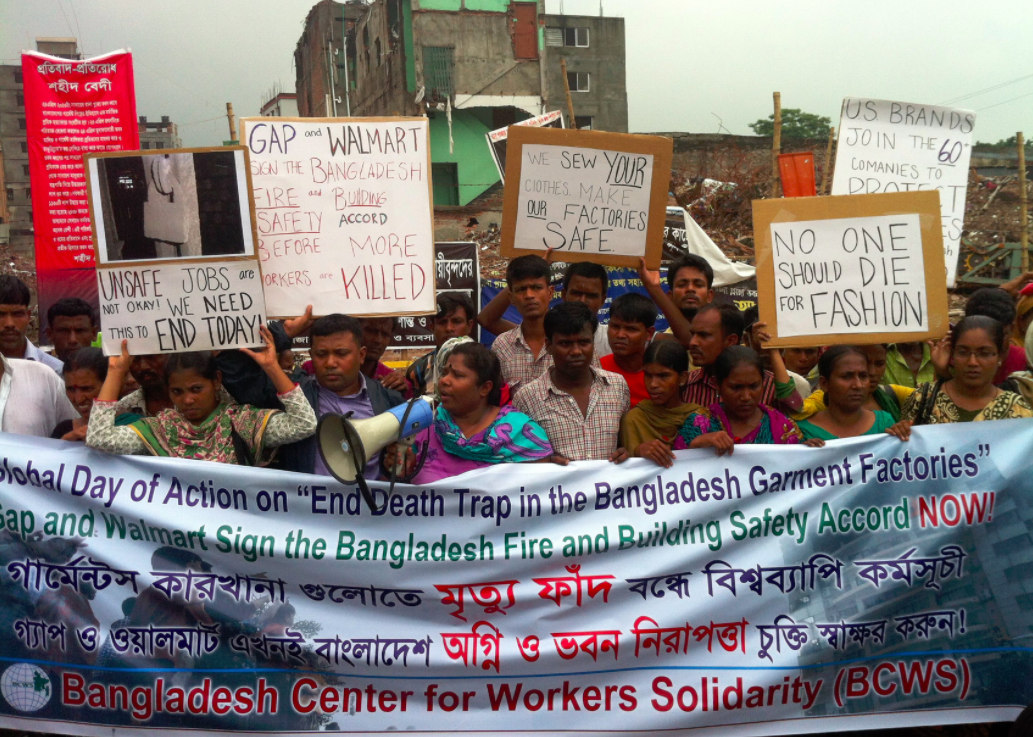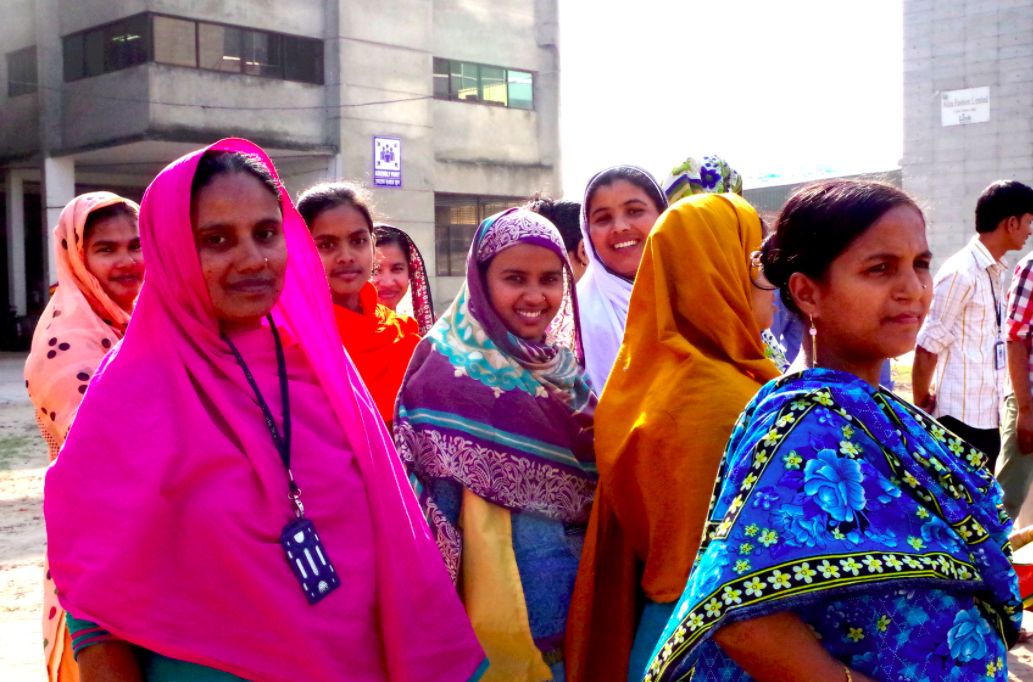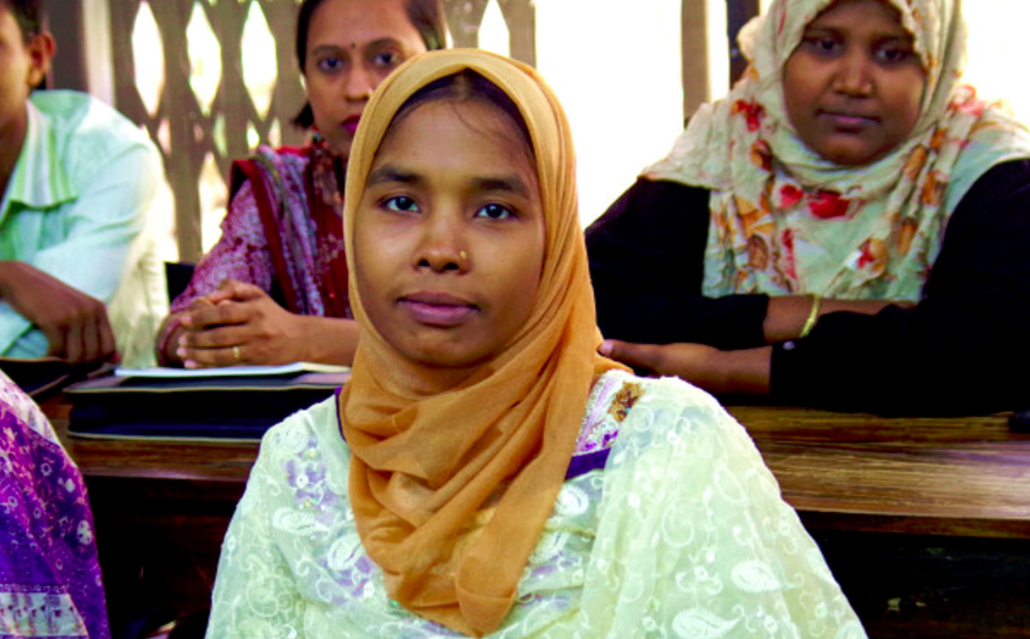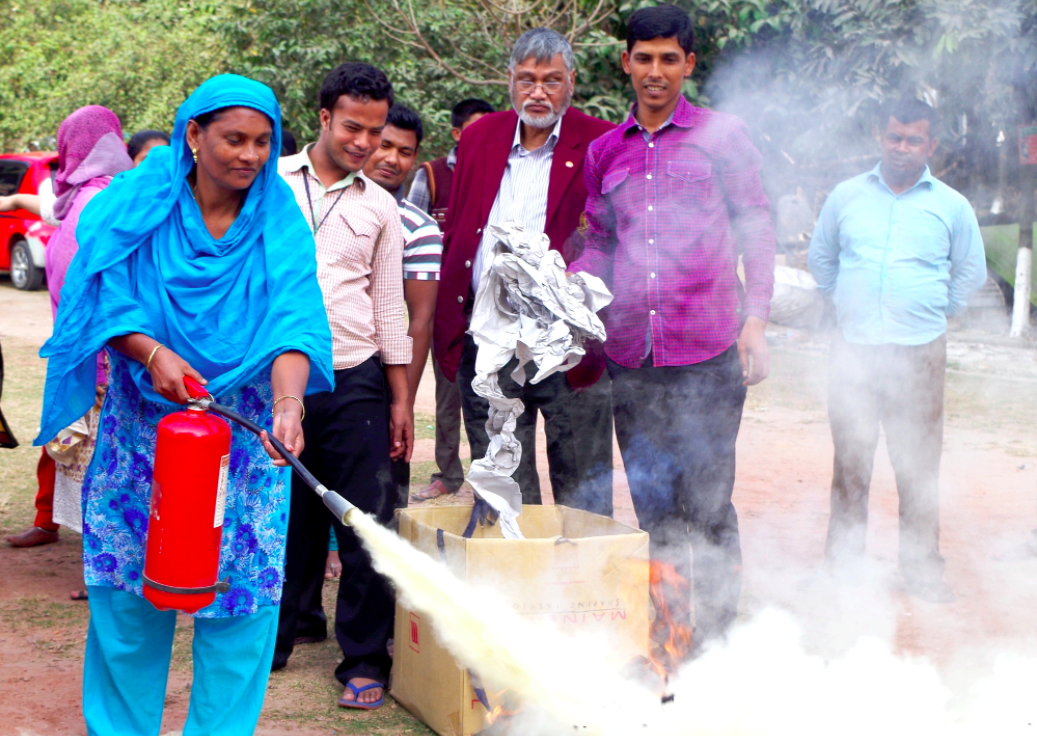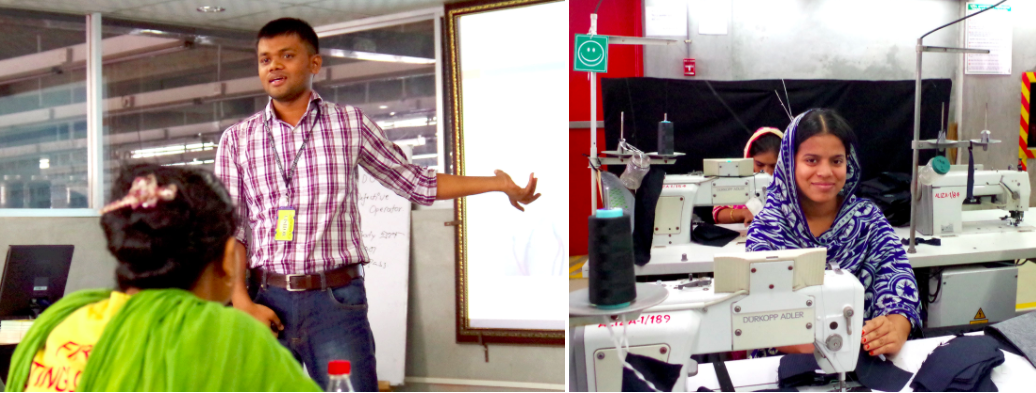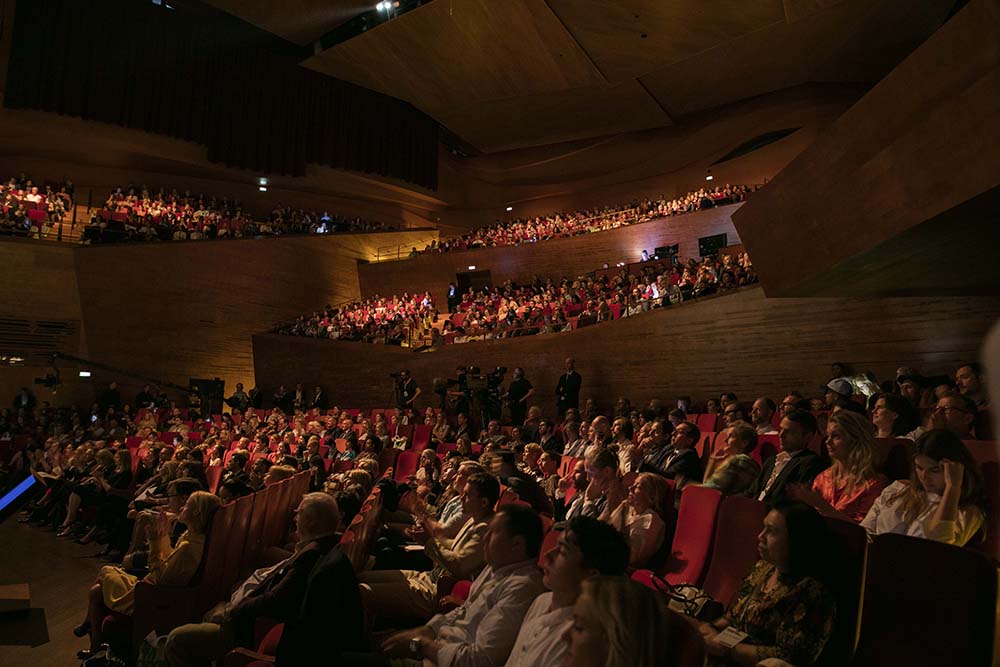Egy magyar sportruházati márka, amely odafigyel a környezetbarát anyaghasználatra és etikus körülmények között gyártat, itthon – a FANNA Polewear alapítójával, Nagy Fannyval beszélgettünk többek között a rúdtáncról, a fenntarthatóságról és a társadalmi szerepvállalásról.
A rúdtánc mint sport egyre nagyobb népszerűségnek örvend hazánkban is. Milyen indíttatásból döntöttél egy sportruházati márka alapítása mellett?
Korábban tervezőként tevékenykedtem, kicsit más területen. Bőrkiegészítőket és -ruhákat terveztem, és már akkor szempont volt a környezettudatos tervezés és gyártás, így újrahasznosított bőrökkel dolgoztam. Időközben elkezdtem a rúdsportot űzni, és azonnal beleszerettem. Onnantól egyértelmű volt, hogy a korábbi irányt fogom kiegészíteni egy vegán és környezettudatos sportruházati vonallal. Az alapinspiráció abszolút a rúdtánc volt, viszont nyitottak vagyunk szinte minden más sportra, illetve utcai vagy otthoni darabokat is készítünk.
Miben nyilvánul meg a fenntarthatóság a márka életében?
Amiben csak lehet! Kezdve az anyagválasztástól, annak a felhasználási módjától, a csomagoláson át a szállításig. Hitelesített anyagokkal dolgozunk, gyűjtjük a használt ruhákat, melyekből ajándéktáskát készítünk a vásárlóinknak. Emellett az újrahasznosított csomagolás nagyszerű módja a már használt anyagok élettartamának a meghosszabbításának!

Kérlek, mesélj részletesebben az általatok használt környezetbarát anyagokról!
Hosszútávú célunk, hogy szélesebb körben is hozzájárulhassunk a fenntarthatósághoz, aminek alappillérjét a megfelelő anyagválasztás képezi. Kétfajta anyaggal dolgozunk jelenleg: az ECONYL® és az OEKO-TEX® minősítésű biopamuttal. A tanúsítvány megszerzéséhez többek között etikus dolgozói körülmények szükségesek, amit a márkánk 100%-ban támogat. Ezt az anyagot továbbá kevesebb vízfelhasználással és vegyszermentesen állítják elő, ami az egészségünk számára is kiemelten fontos.
Az ECONYL® anyagot szintetikus hulladékokból, az óceánból származó halászhálókból állítják elő, majd az újrahasznosítást követően pontosan ugyanolyan minőségű nylonfonalat kaphatunk, mint amilyen a szűz nejlon. Az egyik legjobb tulajdonsága, hogy számtalanszor újrahasznosítható. Az ECONYL® fonalból készült újrahasznosított poliamid tökéletes fürdőruhához és edzőfelszereléshez, míg a biopamutból póló, body, valamint szabadidő ruházat készül.
Mire kell ügyelni a rúdtánc öltözékek tervezésénél?
Arra kell csak figyelni, hogy a hajlatok lehetőleg szabadon maradjanak, ezért található a kollekciókban olyan hosszú ujjú felső vagy nadrág is, amin az érintett részek szabadon vannak. Ettől függetlenül vannak olyan elemek ebben a sportban, amiket leggings-ben is meg lehet csinálni.
Egy erős közösség alakult ki az évek során a brand körül, milyennek látod a Fanna-nőket?
Nagyon jóleső érzés, hogy ilyet visszahallhatok. Imádom a Fanna nőket, mindenki csodálatos, igazi tudatos vásárlók, tele szeretettel! Nekem ők adják a legnagyobb motivációt. A Fanna-nők számomra igazi szuperhősnők.

Örömmel láttam, hogy a FANNA Polewear kiáll a fontos, társadalmi ügyek mellett és ez anyagi támogatásban is megnyilvánul. Milyen szervezeteket választottatok eddig és miért éppen azokat?
Szeretnénk minél több szektort támogatni, mert annyi fontos és fejlesztendő terület van a világban. Eddig támogattuk a Jövő Öko-Nemzedéke Alapítványt, akik Magyarországon tevékenykednek a környezetvédelem ügyében, többek között az illegális szemetelés ellen. Továbbá, a Szívemben Született Afrika egyesületet, ők Afrikában edukálnak és segítik többek között az ott élő nőket, a menstruációs szegénységben szenvedőket. Ezt szerettük volna mi is támogatni – személyes ügyemnek tekintem a nők támogatását.
A Szivárványcsaládokért Alapítványt is támogattuk, mert hiszünk az elfogadásban, a szeretetben és az egyenlőségben. Fontosnak éreztem, hogy kiálljunk egy ilyen ügy mellett is, és mondjuk el a véleményünket egy közösségként, mert összefogással és egymás támogatásával érhetünk el változásokat. Hisszük, hogy a szerelem mindenkié.
Jelenleg a 10 millió Fa Alapítvánnyal dolgozunk együtt. Ebben már aktívabban is szeretnénk részt venni, ezért létrejött a FANNA 10 millió fa közösség, ahol már mi is szervezhetünk faültetést, ezúton is minden segítő kezet szeretettel várunk eseményeinken!

Idén ti is csatlakoztatok a Who made your clothes?-kampányhoz, miért tartottátok ezt fontosnak?
Sajnos még mindig sokan nem néznek a márkák mögé, hogy az adott termék valójában hogyan, milyen körülmények között készült és mégis hogyan lehet ennyire olcsó? Illetve nagyon nehéz lekövetni, és átlátni egy nagy céget, hogy hogyan dolgoztat, milyen kondíciókat biztosít. Nekünk nagyon fontos, hogy megmutassuk és kommunikáljunk arról, hogy mi hogyan dolgozunk.
Kiemelt jelentőségű és égetően sürgős, hogy a rabszolgamunka felszámolódjon. Talán kicsit felfoghatatlan számunkra, hogy ez létezik. Itthon is több olyan varroda van, ahol konkrétan addig dolgoznak a varrónők a varrodában, ameddig élnek, mert soha nem voltak bejelentve, ezáltal nincs nyugdíjuk, illetve 300-500 forintot kapnak egy ruhadarabért, amiből – mikor én odakerültem – kettőt tudtam megvarrni egy egész nap alatt.
Persze, a tapasztalt varrónők többet is el tudnak készíteni. A fizetésük úgy sem volt az egekben, de legalább egészséges körülmények között dolgoztak. Én tanulni és tapasztalatot gyűjteni mentem oda elsősorban, viszont érthető, hogy nem is tudják megtartani a fiatal munkaerőt ezekkel a feltételekkel. Szóval nekem ez is egy személyes ügy. Egyrészt, mert tapasztaltam is a helyzetet, másrészt, mert ez is főleg a nőket érinti. Számomra nagyon fontos, hogy ne csak a vásárlóinknak adjuk meg a tőlünk telhető legtöbbet, hanem a legnagyobb szupererőnknek, a munkatársainknak és a gyártóinknak is biztosítsuk azt, amitől nekik is megéri ezt a munkát szeretettel és lelkesen végezni.

Mit üzennél az olvasóknak, hogyan váljanak tudatos vásárlóvá?
Először is ne vásároljunk, csak akkor, ha valamire tényleg szükségünk van. Ha eldöntöttük, hogy valamire szükségünk van, akkor informálódjunk az adott márkáról. Ez azért nehéz 2021-ben, mert a legtöbb márka bevette a „programjába” valamilyen szinten a fenntartható szemléletet, a kérdés csak az, hogy kik azok, akik nem a greenwashing stratégiát űzik. Kövessetek tudatos influencereket, akik már alaposan utánanéztek azoknak a márkáknak, akiket ajánlanak. Példul Mengyán Esztert, akinek van egy szuper oldala is, ahol gyűjti a hasonló szellemű tudatos márkákat, és kifejezetten a divat területre koncentrál. Minden egyéb tippekért pedig Vászonzsákoslány néven futó Antal Évinek és Zsebibogyó Zsófinak vannak remek tartalmai a témában.
Szerző: Pölz Klaudia, fotók: Fotók: Matovic Mana
Mens verden er gået lockdown, og de fleste af os er gået i fælles isolation, fokuserer vi hos Fashion Revolution på, hvordan pandemisituationen påvirker de millioner af mennesker, som laver vores tøj. Mange butikker rundt om i verden er lukket ned og opfordrer i stedet for til at shoppe online. Denne her tid gør os usikre på den økonomiske fremtid, og derfor stimulerer det ikke ligefrem købelysten til at shoppe nyt tøj.
For os modeaktivister kan omstændigheder forhåbentlig medføre, at vores #Lovedclotheslast bevægelse, som vi har kæmpet for i flere år, kommer til at fylde mere – både nu og på den anden side af Corona-krisen. Produktionen af fast fashion har været voldsomt stigende de senere år og fortsætter kun derudaf. Der bliver produceret for 150 milliarder beklædning om året, hvilket tærer på vores klode og miljø, og tøjindustrien udleder mere CO2 end fly- og skibsindustrien tilsammen. Det kan ikke fortsætte, hvis vi skal holde os under de 2 plusgrader, som forskere verden over har bedt os om. Netop Fashion Revolution Week 2020 handler om at forlænge tøjets levetid og nedsætte hastigheden af vores modesystem. Som noget nyt spørger vi også #whatsinmyclothes? for at afdække de skadelige stoffer i vores tøj, og vi opfordrer til at gå på opdagelse i klædeskabet og finde ud af mere om de materialer, som vores tøj er lavet af. Vi fortsætter også med at spørge #whomademyclothes?, og fokuserer på lønningerne og forholdene for tekstilarbejderne. Vi opfordrer også køberne til at bruge deres økonomiske magt og stemme, til at stille brands og politikere til ansvar og forbedre arbejdsforhold og foreningsfrihed for alle mennesker, der arbejder på tværs af tøjbrands leverandørkæder. For det er netop de mennesker, der er udsat for de største konsekvenser af den uventede Covid-19 pandemikrise.
Det er almindeligt i den globale modeindustri, at tøjbrands betaler flere uger efter levering snarere end ved bestilling. Det betyder, at deres leverandører normalt betaler forud for materialerne eller fibrene, der bruges, for at brands køber af dem. Som svar på pandemien annullerer mange store brands og forhandlere ordrer og stopper betalinger for allerede bestilte varer, selv når arbejdet allerede er blevet udført. De tager intet ansvar for den eftervirkning, det har for de mennesker, der arbejder i deres forsyningskæder. Fabrikker har ikke andet valg end at ødelægge eller holde på de uønskede varer, der allerede er fremstillet, og afskedige deres arbejdere i hopetal.
På grund af coronavirus udbruddet, er der nu 1089 beklædningsfabrikker i Bangladesh, som er blevet påvirket af aflyste ordrer af en samlet en værdi af 1.5 milliarder dollars. Det fortæller en rapport fra Blomberg.
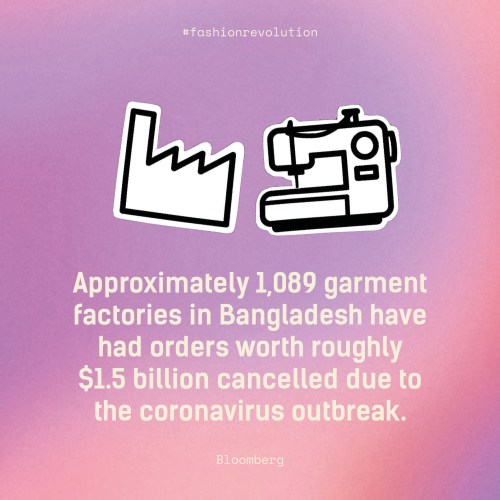
Pandemien gør, at en modeindustri, som allerede er i krise bliver ekstra udsat. Mere end 1 million beklædningsarbejdere i Bangladesh har allerede mistet deres job på grund af afbestillinger relateret til Covid-19, lyder det fra Center for Global Workers Rights.
Ifølge The AWAY Foundationer mange fabrikker i Bangladesh blevet lukket på ubestemt tid. Nogle arbejdere er blevet givet mindre end en månedsløn, som fratrædelsesgodtgørelse, og mange andre har slet ikke modtaget noget.
Nazma Aktor – Direktør for AWAY har forklaret: “at disse arbejdere ikke ved, hvordan de skal forsørge deres familie, hvordan de skal brødføde dem og betale for husleje samt andre nødvendigheder. De ved ikke engang, hvad de skal stille op, hvis de får brug for medicinsk behandling, hvis de får Coronavirus.”
Generaldirektøren for Den Internationale Arbejdsorganisation(ILO),Guy Ryder, beskriver den menneskelige dimension af pandemien som ødelæggende, og dens samlede sundhedsmæssige, sociale og økonomiske virkninger som den værste krise siden Anden Verdenskrig. Han tilføjer også, at krisen afslører den enorme mangel på anstændig arbejdskraft, som stadig hersker i 2020, og at den har vist, hvor sårbare millioner af arbejdende mennesker er, når sådan en krise rammer.
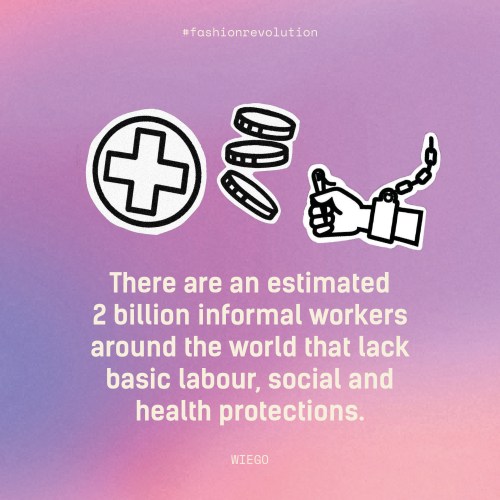
Mode bliver ikke kun skabt på fabrikker. Mode er også håndværk, kunsthåndværk og ting, der ofte bliver lavet i uformelle miljøer. I henhold til Artisan Alliance er håndværk den næststørste beskæftigelseskilde i udviklingslandene. WIEGOvurderer, at der er omkring to milliarder uformelle arbejdstagere overalt i verden, der mangler grundlæggende arbejds-, social- og sundhedsbeskyttelse. Som et resultat af COVID-19, der truer den globale handelsstrøm, står arbejderkooperativer, håndværksgrupper, lokale håndværksbaserede samfund, hjemmebaserede arbejdere, landbrugsarbejdere og landmænd over for fatale økonomiske forhold.
Fashion Revolution har altid forsøgt at være ærlige over for samfundet om de problemer, der skjuler sig i den globale modebranche. Efter at vi blev dannet som reaktion på den 3 største industrielle katastrofe i historien, nemligRana Plaza kollapset i 2013, hvor 1138 mennesker omkom og over 2000 blev hårdt såret, er vi ikke fremmede for udnyttelse og ulighed inden for branchen. Men vi har været og vil fortsat være fokuseret på løsninger og dedikeret til at finde måder at gøre en positiv forskel på. For os ligger et af svarene i vores manifest for en revolution af moden, og vi vil bruge de næste måneder (og år) på at mobilisere vores samfund til at gribe ind for at opbygge denne fremtidige mode.
Vores evne til empati styrkes af vores fælles globale erfaring, og selvom vi nu sidder indendørs, kan vi stadig bruge sociale medier til at gøre en forskel, især når vi taler sammen. Derfor beder vi vores globale samfund om at være mere aktive end nogensinde før. At spørge #WhoMadeMyClothes? og kræve, at modebrands beskytter arbejderne i deres forsyningskæde, ligesom de ville gøre med deres egne ansatte, især under denne hidtil usete globale sundheds- og økonomiske krise.

Hvis vi ikke gør noget nu, vil modebranchen vende tilbage til den sædvanlige forretningsmodel, når dette er over. Lad os i stedet antænde en revolution og opbygge et nyt system, der værdsætter menneskers og jordens velfærd frem for profit. Det betyder, at vi lige nu skal stå sammen for at beskytte og støtte de mennesker, der fremstiller vores tøj.
Det kan du gøre:
1. Send et brev til dine foretrukne modebrand og kræv, at de overholder de ordrer, de allerede har lagt hos deres leverandører, og sørg for at arbejderne, der fremstiller deres produkter, er beskyttet, understøttet og betalt korrekt under denne krise. Vi har oprettet en template på vores hjemmeside her, hvor du hurtigt og nemt kan sende en mail til de store tøjmærker som vi har listet. Mailen er skrevet du skal blot indtaste din mail og vælge det brand du vil spørge?
2. Giv penge direkte til almennyttige organisationer, der yder støtte til tøjproducenter, der har mistet deres job. Vi anbefaler at give penge til:
AWAJ Foundation– En non-profit organisation, der er grundlagt og ledet af beklædningsarbejdere i Bangladesh, der yder støtte til over 740.000 arbejdere. Dette inkluderer retshjælp, sundhedsydelser, organisation af fagforeninger, uddannelse af arbejdstagerrettigheder og industri og politik fortalervirksomhed. Donationer går direkte til arbejdstagere, der har mistet deres job. Dette vil hovedsageligt være i form af kontantudbetalinger for at sikre, at deres grundlæggende behov for mad og husly bliver opfyldt. Hvis du ønsker at yde et bidrag, så skriv til wagj@dhaka.net.
GoodWeave International– En non-profit organisation, der arbejder for at stoppe tvangsarbejde og børnearbejde i globale forsyningskæder. De har lanceret COVID-19 børne- og arbejdstagerbeskyttelsesfond for at levere øjeblikkelig humanitær hjælp og tjenester til sårbare befolkninger i Indien, Nepal og Afghanistan. de indsamler penge og betaler for levering af mad og ressourcer til arbejdstagere og deres børn. Doner her.
The World Fair Trade Organisation (WFTO)har lanceret #StayHomeLiveFair-kampagnen til støtte for sit globale netværk af arbejdere, landmænd, kunsthåndværkere og samfund under krisen. Du kan støtte ved at besøge deres webshop og støtte deres medlemmers crowdfunding-indsats. Støt her
CARE, den globale NGO for social retfærdighed, har arbejdet i beklædningsindustrien i over 20 år og fokuserer på at beskytte og støtte kvinders og pigers rettigheder og behov under pandemien. CARE’s Emergency Surge Fund matcher alle donationer og bruger midler til hurtigst muligt at give familier hygiejniske masker, håndvaskestationer og hygiejnesæt. Doner her.
3. BE CURIOUS FIND OUT DO SOMETHING
Forhold dig nysgerrigt og spørg #whomademyclothes #whatsinmyclothes
Gå på opdagelse i dit klædeskab, kig på dine labels og undersøg dine tøjbrands hjemmesider, for at se hvad de fortæller dig om, hvordan de har produceret dit tøj!
Vi opfordrer stadig til, at man forlænger levetiden af sit tøj. Ved at fordoble en t-shirts levetid har du sparet 44% CO2. Så vask på få grader, reparer dit tøj, når det går i stykker, og byt eller sælg det, når det endelig skal videre og køb genbrug. Stil krav til virksomhederne, så de gentænker deres strukturer, implementerer bæredygtige praksisser og kommer ned i hastighed. Vi opfordrer til, at man laver kærlighedshistorier på nettet om sit tøj eller en #haulternative, som betyder, at man viser frem på sine sociale medier, hvad man allerede har af tøj i sit klædeskab, og hvordan man kan style det på nye måder. Brug ekstra tid på din garderobe, kreer noget ud af tøjrester og reparer det du har, hvis det er gået i stykker.
Når du kigger efter nyt tøj så gå efter de små, bæredygtige brands. De har som regel mere kontrol med deres leverandørkæder end de store kæder, som har lange og komplicerede forsyningskæder, der er svære at gennemskue. Men hold øje med hvad brandet selv fortæller. Desuden er GOTS certifikatet et mærke, der både garanterer ordentlige miljø og sociale forhold i en produktion. Så det er også værd at kigge efter om tøjet har det mærke.
Følg vores organisation OG elsk jeres tøj meget mere.
A new report by Changing Markets Foundation, ‘Dirty Fashion Disrupted’, reveals that while some fashion brands and leading viscose producers are making progress to clean up dirty viscose manufacturing, the majority of brands simply continue to talk about sustainability with no evidence of action.
WHAT IS VISCOSE?
In simple terms, viscose is a cellulosic fibre which is made from wood pulp. This means that the material has a major impact on deforestation and requires a strenuous, and often heavily polluting, chemical process to turn the raw material (wood) into textiles for clothing. It’s this chemical production process that Changing Markets is trying to clean up.
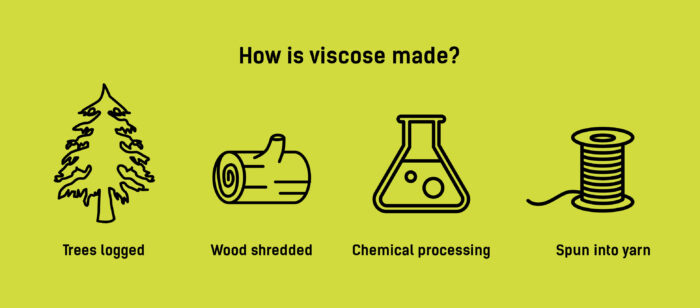
Viscose is the third most commonly used fibre in the world and it has the potential to be a sustainable alternative to oil-based synthetics. Yet, previous Dirty Fashion investigations found clear evidence of viscose producers dumping untreated wastewater, contaminating waterways and ecosystems, and causing severe health impacts to local communities.
A toxic and endocrine-disrupting chemical, carbon disulphide (CS2), used in the viscose manufacturing process has been linked to serious health conditions, most notoriously as a cause of mental illness in factory workers but also a wide range of other conditions ranging from kidney disease to heart attacks and strokes.
DIRTY FASHION DISRUPTED
‘Dirty Fashion Disrupted’ assesses where global clothing companies and viscose producers stand in the transition towards responsible viscose. Through detailed scrutiny of 91 brands’ and retailers’ transparency and sourcing policies, and producers’ responsible production plans, the report examines the progress to date and gaps in existing commitments and pledges.
In August 2019, the Changing Markets Foundation – along with Fashion Revolution, Ethical Consumer, the Clean Clothes Campaign and WeMove.eu – reached out to over 90 global clothing brands and retailers, asking them for their most recent information on how much viscose they use, the details of any policies they have to address the environmental impacts of their viscose supply chain, the names and factories of their viscose suppliers, any plans to disclose these suppliers publicly in the future, and inviting them to commit to the Roadmap towards responsible viscose and modal fibre manufacturing.
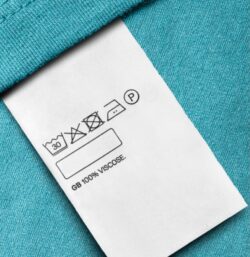
SOME IMPROVEMENTS…
Many brands have shown a marked increase in transparency on their viscose supply chain. On their websites, four of the brands who have signed onto the campaign, Esprit, Tesco, M&S and ASOS, now publicly list the companies – down to the factory names – that provide them with viscose fibre. The remaining signatories (apart from Inditex), as well as several other brands, have disclosed the name of at least several of their viscose suppliers on their websites.
Orsola de Castro, Founder and Creative Director of Fashion Revolution commented:
“Transparency is visibility. We want to see the fashion industry, respect its producers and understand its processes. We want a clear, uninterrupted vision from origin to disposal to foster dignity, empowerment and justice for the people who make our clothes and to protect the environment we all share.”
STILL NOT ENOUGH ACTION…
The vast majority of brands are still lagging a long way behind the frontrunners on transparency. You can see which brands are taking steps towards more responsible viscose here: http://dirtyfashion.info/
Ten major high street brands and retailers have committed to take action on responsible viscose supply. However, luxury brands, including Prada, Dolce & Gabbana and Dior and low-cost retailers such as Walmart, Matalan and Boohoo, are failing to take action on polluting supply chains, devastating ecosystems and causing severe health impacts in local communities in India, China and Indonesia. It’s clear that the commonality among the laggards isn’t price point, but willingness to take fashion’s footprint seriously.
More than 25% of the brands investigated have no viscose policy in place, and many of these lack any environmental policy. Still, the Changing Markets has seen an increase in the number of brands responding to their questions and engaging with the campaign. For a full list of their findings, go here.
THE ROADMAP
In 2018, Changing Markets launched a Roadmap towards responsible viscose and modal fibre manufacturing to address the environmental and social problems in its manufacturing and provide a blueprint for responsible production for brands.
Ten major brands and retailers – Inditex, ASOS, H&M, Tesco, Marks & Spencer (M&S), Esprit, C&A, Next, New Look and Morrisons – have now made a public pledge to integrate its requirements into their sustainability policies. These brands are also expected to engage with their suppliers and use their leverage to drive towards more responsible viscose production.
Urska Trunk, Campaigns Adviser, Changing Markets Foundation commented:
“With increasing awareness of the environmental and social impacts of the fashion industry, people expect clothing companies to take responsibility for their supply chains. Brands and retailers can no longer turn a blind eye to this. They need to rise to the challenge and open their supply chains up to external scrutiny to put the industry on a more sustainable footing.”
WHAT CAN WE DO?
As citizens and consumers, we must use our voices to demand that fashion brands source materials in a transparent and responsible manner. It is unacceptable that over a quarter of the surveyed brands have turned a blind eye on viscose production that poisons people and contaminates waterways. Let’s ask #WhoMadeMyClothes? because we know that transparency is the first step in achieving a clean fashion industry that is safe for the wearers and the workers.
Tweet brands using the hashtag #dirtyfashion and ask them to be more transparent and move towards more responsible viscose here. Sign the petition to demand more responsible viscose here.
Photo: Shilpi Rani Das started working in a garment factory when she was 12 years old and moved to work at Rana Plaza at 13. She was working on the 8th floor at the time of the factory collapse. She lost an arm and spent the next 2 1/2 years in hospital. She is now at school, plays badminton and supports her family by sending money home. She is starting Open University.
The theme of International Women’s Day 2019 is #BalanceforBetter and asks how we can help forge a more gender-balanced world. Brands and retailers are, predictably, all doing their bit to show support, from Pretty Little Thing’s promotion of their #EveryBodyInPLT movement with T-shirts from £10, with profits going to the charity WAGGGS to Net-a-Porter’s limited edition collection in collaboration with six female designers, with profits going to Women for Women International.
None of the webpages about the T-shirts feature any information about how or where they are made or who made them. About 75 million people work directly in the fashion and textiles industry and about 80% of them are women. Many are subject to exploitation and verbal and physical abuse. They are often working in unsafe conditions, with very little pay.
Actress Aisling Bea tweeted during Fashion Revolution Week last year: “My particular bugbear is feminist tees which were not made by women who were paid fairly for their labour. Check your tags and brands.”
Slogan T-shirts with female empowerment messages will be everywhere this week to coincide with International Women’s Day, but the reality is that the fashion industry doesn’t empower the majority of women who work in it. Gender-based inequality remains a problem throughout the industry, from the highest levels of management to the shop floor and the factory floor. We still have a very long way to go until everyone who makes our clothes can live and work with dignity, in healthy conditions and without fear of losing their life.
One of the main projects Fashion Revolution worked on in 2017/18 was the Garment Worker Diaries. On-the-ground research partners met with 540 garment workers in India, Cambodia and Bangladesh on a weekly basis for twelve months to learn the intimate details of their lives. 60% reported gender-based discrimination, over 15% reported being threatened and 5% had been hit. When I met with the President of the Bangladesh Garment Manufacturers and Exporters Association in November 2017, he told me categorically that sexual harassment doesn’t exist in garment factories in Bangladesh. One statistic I found particularly shocking was that 40% of the workers surveyed had seen a fire in their place of work. The women making our clothes are still risking their lives every day for our fashion fix.
In January, The Guardian revealed that Spice Girls T-shirts raising money for Comic Relief’s Gender Justice campaign were being made at a factory in Bangladesh where women earned 35p an hour and claimed to be verbally abused and harassed. Garment production in Bangladesh is still carried out in a very opaque manner and the lack of information about where our clothes and shoes are made and who made them is a huge barrier to changing the fashion industry. This means that gender inequality and human rights abuses and remain rife. If you can’t see it, you can’t fix it, which is why Fashion Revolution urges all brands and retailers to have full supply chain transparency, and we track this through our annual Fashion Transparency Index.
Fashion Revolution’s Fashion Transparency Index 2018 which reviews and ranks 150 major global brands and retailers according to their social and environmental policies, practices and impacts, throws a spotlight on how brands and retailers are tackling gender-based discrimination and violence in supply chains. The report specifically looks at how they are supporting gender equality and promoting female empowerment, both in their own company and in the supply chain.
Whilst, most brands publish policies on discrimination, harassment and abuse, the research show that only 37% of brands are publishing human rights goals. Without reporting on goals and, importantly, annual progress towards these goals, consumers have no way of knowing whether their clothing purchases are really helping to drive improvements for the women who are making their clothes.
Only 40% of brands and retailers reported on capacity building projects in the supply chain that are focused on gender equality or female empowerment, while just 13% publish detailed supplier guidance on issues facing female workers in their Supplier Codes of Conduct. Only 37 out of the 150 brands surveyed report signing up to the Women’s Empowerment Principles, an initiative by the United Nations Entity for Gender Equality, or publishing the company’s overall strategy and quantitative goals to advance women’s empowerment. Meanwhile, just 5% of brands are disclosing any data on the prevalence of gender-based labour violations in supplier facilities, such as sexual harassment and other forms of gender-based violence, or the treatment and firing of pregnant workers.
In the 2019 Fashion Transparency Index, to be published in April, we will be surveying 200 brands and asking the same questions around women’s empowerment. Women’s economic empowerment and closing gender gaps at work is key to realising women’s rights and central to achieving the 2030 Agenda for Sustainable Development, in particular SDG 8 on promote sustained, inclusive and sustainable economic growth, full and productive employment and decent work for all.
According to the BoF McKinsey & Company report The State of Fashion 2019 “Younger generations’ passion for social and environmental causes has reached critical mass, causing brands to become more fundamentally purpose driven to attract both consumers and talent”. As a result, the appearance of the word “feminist” on retailer homepages and newsletters is forecast to increase in frequency sixfold compared to two years ago. Brands are adopting feel-good feminist slogans, yet the rise of real feminism and female empowerment within the industry is a long way off for most women who work in it, from the highest levels of management to the shop floor and the factory floor.
If we really want to see a more gender balanced world, brands and retailers need to do more than sell empowering T-shirts; they need to make sure their policies are put into practice. And not just in the visible places, on fashion shoots or within their company, but at every level of their supply chains. The people making our clothes may not be visible, but every garment they make has a silent #MeToo woven into its seams. At Fashion Revolution, we believe positive change in the fashion industry is possible, and it starts with transparency.
With the recent publicity around sustainable oriented fashion new year resolutions we’re revisiting this article centred around ASOS’s announcement to ban all feathers, silk mohair and cashmere last year. The article raises the point that whilst praise should be given to those re considering the attitude towards fashion and their wardrobes, blanket statements towards your future habits are not always the best form of action. We encourage you to think, question and research solutions to your current less favourable buying habits. Moving to sustainable fashion is step in the right direction, however the term is broad, only through research and transparency can we separate the brands genuinely looking to install good practices at every level of the supply chain from those just making a token gesture towards improving practices.
The recent announcement from ASOS that they will be banning all feathers, silk, mohair and cashmere has started a social media furore, quite rightly. Not because the ban in itself is a mistake – it shows that they are indeed taking into account their customers’ concerns in regards to animal welfare; concerns that our insatiable desire for soft, fluffy and silky materials poses a real threat to animals and their environment. The controversy arises from our suspicions that this new policy will not introduce better solutions to replace unethical, environmentally-unfriendly fabrics.
ASOS will need to replace those products with other equally soft, silky and fluffy materials and, inevitably, the fear is that the alternative will increase the production of fabrics made from plastic-based fibres such as polyester which are potentially just as bad, if not more harmful to the natural world and the animals living in it in the long run. And therein lies the contradiction: in order not to harm goats, geese, ducks and silk worms, the risk is that other forms of life, including us, will be harmed in the process. Instead of a blanket ban on these materials, should ASOS instead have focused on innovation and responsible sourcing, such as using Peace Silk or ensuring feathers are sourced under the Responsible Down Standard guidelines?
Polyester is pure plastic, it takes an estimated 1000 years to decompose. It releases microfibres which can enter the bloodstream of marine species, causing reproductive and growth issues and when ingested they cause species to think they are full and consequently become malnourished. Moreover, they can can enter human bodies when we consume shellfish, with currently unknown consequences. It has been estimated that 1.4 million trillion microfibres are currently in the oceans (Leonard, 2016), with some regions releasing up to 281 kilotonnes of primary microplastics per year (Boucher and Friot, 2017). If the fashion industry continues in a business-as-usual scenario, between 2015 and 2050 22 million tonnes of microfibres will enter our oceans (Ellen MacArthur Foundation, 2017).

The fact that polyester is recyclable in circular, closed loop systems is not an excuse because we are still far from having an industry capable of recycling its plastic successfully enough not to produce more plastic overall. We are on the road to circularity, but we are not there yet.
We are nowhere near an industry where materials are recycled or downcycled in a clean, non-toxic, efficient way. The technology to recycle mixed blends such as cotton and poly still requires further injections of polyester to increase quality and functionality and blended fabrics cannot yet be commercially separated at scale in order to recycle the different fibres.
Even biodegradable materials are not completely harmless. Organic waste decomposing in landfill is one of the biggest contributors of atmospheric methane. At the moment, we really are stuck between a rock and a hard place.
The debate over ASOS’s announcement is possible because there is now enough information on the negative effects of plastic on our environment. Not enough was done by ASOS to consider the reaction of a better educated audience and not enough reassurances were given on what alternative materials will be used instead. This announcement did look a lot like a nod to the growing animal welfare lobby, rather than a well thought out strategy leading to real and radical changes for the better. Is this a convenient excuse to divert from costly fibres and replace with synthetic alternatives in the name of ethical progress?
The announcement may prove that ASOS, like other brands, are listening but it also shows that they don’t necessarily know where they are going because right now nothing has a simple solution; almost every step comes accompanied by a fair amount of inevitable contradictions.
It won’t be easy or quick to steer these gigantic ships, to change our habits and theirs in favour of fully sustainable alternatives. Of course, the entire fashion industry needs to speed up and adopt better social and environmental practices throughout its complicated, ineffective and exploitative supply chain and what we can keep doing is encouraging debate and dialogue. Be vigilant, scrutinise, keep asking questions. This at least will show brands that we won’t be satisfied by half measures and unresolved solutions. That we expect real change because we want to wear clothes that make us feel good – and exploitation and resource depletion are definitely not a good look.
Photo credits:
Clothing sorted for recycling, Buenos Aires, Carry Somers
Ocean: Ross Miller
In it’s 5th year and already the worlds largest fashion activism movement, Fashion Revolution was formed in response to the Rana Plaza factory collapse in Bangladesh in 2013, where 1,138 people lost their lives. Calling for greater transparency in the supply chain, workers rights and a re-think of the way we use and consume clothing, Fashion Revolution is a global campaign that champions an ethical and sustainable fashion industry.
As Novel Beings, now A Novel Approach, Khandiz and I have worked with Fashion Revolution to art direct and produce their branding campaigns for 2015 and 2016, but we knew the 2018 should be something slightly different. Not only should the tone be reflective and respectful of the campaigns origins, but it should also celebrate all the wonderful young people who have embraced the rally all to action and joined the fashion Revolution.
So in order to celebrate all the wonderful revolutionary consumers who have joyfully taken up Fashion Revolution’s cause over the last 5 years, we ran a competition to find the faces of the 2018 Fashion Revolution campaign. We were looking for passionate young people, all at different stages of their own personal Fashion Revolution, to fly the flag for us.
We were overwhelmed by the response and delighted by our final selection. From musicians to bloggers and fashion students, please meet the Faces of The Revolution.

Grace Fairweather
How did you first hear about Fashion Revolution and what inspired you to want to be the next ‘face’ of the campaign?
I first heard of Fashion Revolution through the incredible London-based brand Birdsong. Dazed Digital did an article on them a few years ago and, even though I was already interested in and attempting slow fashion, this is when I really started to commit to ethical and sustainable living. A few Google searches later, I had found Fashion Revolution and the endless inspiration and information they provide.
When I saw Fashion Revolution was looking for “faces” for their anniversary campaign, I jumped at the opportunity to model for an organisation I align with morally. I’ve existed on the periphery of modelling for a while now; doing odd shoots and jobs for fashion-based businesses, but have always been wary of taking a job that could mean compromising my personal ethics. This is the first time I’ve modelled for an exclusively “ethical” organisation, (Fashion Revolution) and agency (A Novel Approach) and it was an incredible experience!
What do you do when you’re not posing for Fashion Revolution?
Hello! First-and-foremost an English student, but I’m also a blogger, model, and freelance writer.
What changes in your shopping or self-styling habits has Fashion Revolution inspired you to make?
One of the great things about Fashion Revolution is that, as an organisation, they champion multiplicity. My slow fashion journey has taught me that there is no one-way to live sustainably and any path you do take has its own complications, moral and otherwise. My current favourite to shop sustainably is Depop. I’ve recently created my own concept shop on there as an extension of my blog, November Meets May. (@novembermeetsmay on Depop).
Do you have any advice for anyone who would love to ‘green up’ their wardrobe and join Fashion Revolution, but doesn’t know where to start?
Equip yourself with knowledge! Knowledge will be your best tool in deciding which green path is right for you. Watch the True Cost, read newspaper articles on the current state and statistics of fast fashion, and keep up-to-date with Fashion Revolution. My own journey was a slow one and you don’t have to do anything earth-shattering to be a part of the revolution. Making the decision not to shop fast fashion for 3 months, a month, even a week is a great start and will make more difference to your life and the lives of others than you realise.
What is your most cherished piece of clothing and why?
I have the most incredible vegan, pinatex (pineapple leather) jacket from a sustainable, LA-based brand called Pangean, with “Save the Planet” embellished on the back. It’s easily the piece I get the most comments and compliments on. Nothing makes me feel more badass.
What will you be doing for Fashion Revolution Week?
There are so many amazing events on this year that it’s hard to decide! Here in Exeter an ethical clothing store, Sancho’s Dress, is putting on a different event every day of the week, so I really am spoilt for choice. So far, I’m thinking of attending their “Meet the Makers” panel and sales event party, and then heading up to London for the Depop x Fashion Revolution event, as well as (hopefully) the Galdem x Fashion Revolution event.
Who is your style icon?
Janelle Monae and Willow Smith. Sorry, I couldn’t pick one!

Mao Miyakoshi
How did you first hear about Fashion Revolution and what inspired you want be the next ‘face’ of the campaign?
I heard about it for the first time in Japan a few years ago. I was so happy that we could have the opportunity to share more information of ethical fashion to Japanese people because ethical fashion is still isolated compared with the European market.
I arrived in London from Japan with a two year visa, I made a promise to myself that I will try things that I’m excited about, even if it feels impossible or makes me anxious because you never know what’s gonna happen.
When I saw the post for ‘Model Wanted’ for the Fashion Revolution campaign, I felt super excited and imagined how nice it would be if I’m in the shoot. But after 3 seconds, the doubt appeared. ” Don’t be silly, Mao. You don’t have anything. You are not as beautiful or have as nice a body as model; you’re short, not skinny. Of course it’s not for you. Model needs to be like model.” But I tried to change my mind, decided to give it a try, because nothing would change if I fail. I thought an Asian girl being in the shoot in Europe would be interesting, and seeing a model that’s short and non-skinny can encourage people who think they are not special. Also, at least I passed the applicant requirement that I am in UK and I could attend the shoot date, and I LOVE ethical fashion! Also, I wanted to have more connections with like-minded ethical people, so I’m so glad I applied!
What do you do when you’re not posing for Fashion Revolution?
I’m beginning my work as a fashion stylist. I have been building my portfolio and sending submissions to magazines. So far, my work has been accepted by two magazines, one in Germany and one in America! I would love to use my work to promote ethical fashion. I’m also a fashion assistant at the sustainable fashion brand COSSAC and in October I’ll be a MA Textile design student at Chelsea College of Art.
What changes in your shopping or self-styling habits has Fashion Revolution inspired you to make?
I haven’t bought new clothes that much in the last few years since I have been into ethical fashion. I have three older siblings, they and my mother give me lots of clothes and because I love fashion styling I’m always trying to figure out more ways to wear the clothes I have.
But Fashion Revolution has definitely given me more ethical shopping options and ideas for how to how we can treat our clothes nicely.
Do you have any advice for anyone who would love to ‘green up’ their wardrobe and join Fashion Revolution, but doesn’t know where to start?
I would suggest they choose the category that they are interested in the most, like clothes, accessories or lifestyle or cosmetics and then Google it. You can easily find nice opinions and articles from bloggers and you can pick some nice brands from them. But the important thing is not to get stressed and worried. Sometimes, people feel a duty to purchase sustainable products, even if they don’t like the design. The approach is not going to work in the end. The key is to enjoy yourself, and celebrate the ethical and environmental movement at your own speed.
What is your most cherished piece of clothing and why?
My checkered trousers are the no.1 useful piece in my wardrobe. It can transform any way I like, for a cool style, or pop style and always people asked me where I got them. I found them at flea market in Yoyogi Park in Tokyo and they cost only £3! Another favorite piece is the T-shirt that I wear in second picture. This was a surprise gift from a friend; the design is from my favorite illustrator Kazuo Hozumi. She remembers that I like his work and she bought it for me as soon as she saw it. Always receiving a gift makes me pleased, especially if it’s a surprise. It was double happiness.
What will you be doing for Fashion Revolution Week?
The brand I assist at COSSAC, will have a show room in the event ‘Ethical brands for Fashion Revolution’, so I will be there, but I’m also planning to attend several events as all event looks super interesting so it’s gonna be quite busy week for me.
I am planning to ask #whomademyclothes but haven’t decided on the brand yet, as soon I do I’ll share the photo on instagram.
Who is your style icon?
I don’t have a specific fashion icon. My mother was my first icon, but I am always inspired by the arts and all kinds of actresses, films and photography. My favorite films are Amèlie and Simple Simon. I like directors with a unique view of the world of like Jean Pierre Jeunet and Woody Allen.

Rachel Callender
How did you first hear about Fashion Revolution and what inspired you to want be the next ‘face’ of the campaign?
I was introduced to Fashion Revolution through a previous graduate from my university. Their work is very focused on sustainability and conscious design, actively questioning and challenging attitudes towards the waste the fashion industry produces throughout the design process.
Knowing that I wanted to learn more ways to be a sustainable and considerate designer myself, he sent me the link to Fashion Revolution and voila!
How has Fashion Revolution inspired your shopping or self-styling habits?
Before discovering the campaign I had recently stopped shopping high street brands and I certainly can’t afford to buy designer clothes with just my student loan! So charity, second hand and vintage shops were and are still my go to. What Fashion Revolution has taught me is the importance of considering the lifespan of your purchases. Now I am even questioning my charity buys and how they could be recycled at the end of their lives, depending on their fibre content.
What do you do when you’re not posing for Fashion Revolution?
I’m a Fashion Design: Menswear second-year student at Central Saint Martins.
Do you have any advice for anyone who would love to ‘green up’ their wardrobe and join Fashion Revolution, but doesn’t know where to start?
When buying ‘new’ items for your wardrobe, start at a second-hand shop! Try Mary’s Living and Giving stores, or ’boutique’ charity shops if you don’t want to work too hard to find something beautiful, as they offer a more curated selection of garments.
But I have personally found the best garments at the jumble sale style shops! You just have to be willing to look long and hard, but when you do you can snag yourself a bargain for your toil. Repairing loved garments, instead of throwing them away if they become damaged by darning and patching, can actually make them look even better and gives character to clothes. I personally love sashiko stitched patches to revive tired clothes.
What is your most cherished piece of clothing and why?
I have a ginormous sweatshirt I bought at Crisis in Finsbury Park, which I adore and barely ever take off. It’s a heavily faded shade of purple with a screen-printed illustration of a Vizsla dog on the front, which is also peeling and fading. It seems to have been a work sweatshirt for ‘Red Dog Films’. I don’t know why I’m so attached to it really; I think I just love the little Vizsla print!
Who is your style icon?
I honestly couldn’t say I haven’t had one of those for a while! Style influence, on the other hand, would be a combination of my mum and dad’s wardrobes.
What will you be doing for Fashion Revolution Week?
I will be making my own clothes! Sourcing fabrics and all components which will allow me to definitely answer the #whomademyclothes!
But a problem a lot of designers and makers have is that more fabric shops than I’d like to hold back information about their supply chain which makes it difficult to ultimately determine whether the fabrics were created in sustainable and ethical conditions. There definitely needs to be more transparency in fabric shops. The Cloth House in Soho is one of the better stores in London for transparency and product knowledge. And online you can find fantastic eco options at Offsetwarehouse.

Freya Joy
How did you first hear about Fashion Revolution and what inspired you to want to be the next ‘face’ of the campaign?
I have been following Fashion Revolution since I joined instagram. I’ve always really admired their work, It’s such an empowering movement and it’s so easy for you to join in, get your hands dirty and really feel like your contributing to something important; armed with nothing more than a spare five minutes and your smartphone. Having been applauding Fashion Revolution from a distance for so long, I leapt at the chance to be a part of the campaign. I’m so grateful to have had the opportunity to be involved in something that has influenced and inspired me so much.
How has Fashion Revolution inspired your shopping or self-styling habits?
I’m a charity shop addict. It can be so hit and miss and I love that, it kind of feels like modern day treasure hunting. There’s definitely a feeling of success I get when I find something I love in a charity shop that I don’t get in the same way when buying brand new clothes. I’d say that’s where everything I’ve learned from Fashion Revolution has affected me the most. Understanding where my clothes have come from and the impact their production has on the lives of the people who make them and on the environment has definitely given me a newfound sense of responsibility as a consumer that has really lit the fire under my existing charity shop enthusiasm!
What do you do when you’re not posing for Fashion Revolution?
I’m a Musician and I also work for Lush UK.
Do you have any advice for anyone who would love to ‘green up’ their wardrobe and join Fashion Revolution, but doesn’t know where to start?
My main piece of advice, or maybe reassurance would be that it’s much easier than you think. One of the facts that really stood out for me, from Fashion Revolution’s fanzine, “Loved Clothes Last”, is that by extending the life of your clothing by a further nine months, you can reduce the carbon, waste and water footprint by around 20-30% for each piece. With that in mind, learning simple tricks for how to care for different fabrics, or how to repair clothes instead of throwing them away when they show signs of wear and tear, become inspiring, revolutionary acts.
What is your most cherished piece of clothing and why?
That’s a very difficult decision to make! I have a lot of my mum’s and brother’s old clothes that I wear often and love mainly because they were theirs first. But it’s probably a vintage M&S blazer I acquired whilst volunteering in a charity shop in my hometown when I was fifteen. I still wear it a lot now, but back then I don’t think I left the house without it for about two years; I just completely fell in love with it. Working at the charity shop was probably the catalyst for how crazy I am about charity shopping now. So there is definitely an element of nostalgia and gratitude I feel towards that blazer, which would make it difficult for me to ever part with it!
Who is your style icon?
My style icon would have to be Nai Palm, lead singer of Hiatus Kaiyote. Much like her music, her style is wildly varied and inspired by a diverse range of cultures and influences. Not one to shy away from accessories, metallics and bold colours, she usually wears lots of ever-changing chunky, oversized jewellery.
In a beautiful interview she did a couple of years back for the Under The Skin project, she talks about how a lot of the jewellery she is drawn to comes from nomadic cultures, which, being an orphan who moved around a lot as a child, she identifies with. She also talks in the interview about how off the back of her aesthetic, people who aren’t familiar with her work often assume she is in a punk band, when in fact she is an R&B/Soul singer. I really admire how her style doesn’t conform to any particular ‘genre’, really it’s the amalgamation of everything that she somehow manages to make work together seamlessly, that in turn makes her look so authentic and enchanting. I think that’s a really unique and beautiful thing.
What will you be doing for Fashion Revolution Week?
I’ll definitely be asking some brands #whomademyclothes… It’s an important question to keep asking. And I’m planning to come to some of the London events.
__
Download our campaign images here and help spread the word about Fashion Revolution!
This week we are celebrating Fashion Revolution and the journeys of two women and acknowledge the barriers they have overcome. Nobody tells it better than the weavers themselves – they’re the true beating hearts of The Basket Room and the story behind each woven basket we sell. So we caught up with two members of the Kenyan weaving cooperative we work with: Peninah and Florence. Here’s what these talented craftswomen have to say about being working women in 2017, and the barriers they have overcome through basket weaving and working within a cooperative.
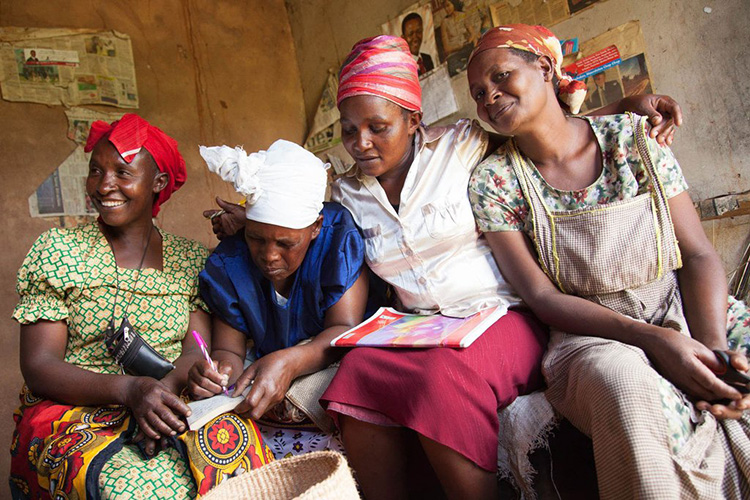
Peninah Munyao was born in 1978. She is married and has three sons aged 16, 11 and 4. As a housewife, she manages the household and also dabbles in farming and of course, basket weaving. Like so many of the weavers we work with, Peninah was taught to weave by her grandmother.
Florence Bernard is treasurer of the weaving cooperative Peninah works for, and was born in 1962. With five children aged between 38 and 23, Florence also runs a greengrocers’ as well as weaving baskets and travelling frequently to Nairobi to sell baskets. Florence has been weaving baskets since 2001 and was taught the craft as a child, by her mother.
What do you feel you have achieved as a working woman?
PENINAH: From basket weaving, I am able to meet the needs of my household: paying school fees, putting food on the table and buying clothes and other essentials, as well as having some money left over to save.
FLORENCE: I have been able to support my greengrocery and basket trading businesses from the money I make from basket weaving. I also use this income to support the needs of my family.
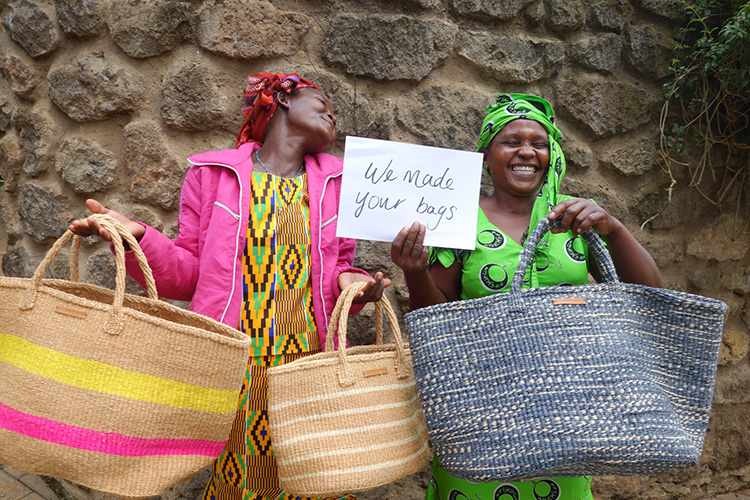
What challenges do you face as a working woman?
PENINAH: Sometimes it is difficult to source enough sisal fibre, since the plant is grown in a different region and it can take a while to arrive at our markets. Since I am also a mother and a housewife, my duties – primarily, taking care of my family – have to take precedence over weaving, which means that sometimes I cannot produce as many woven baskets as I would like to.
FLORENCE: Rain, although a massive blessing to farmers and food sellers, impedes basket weaving. When it does rain, weaving must stop so that the crops can be tended to. Likewise, drought also hinders basket production because again weaving must stop so that we can travel further afield than normal to find water.
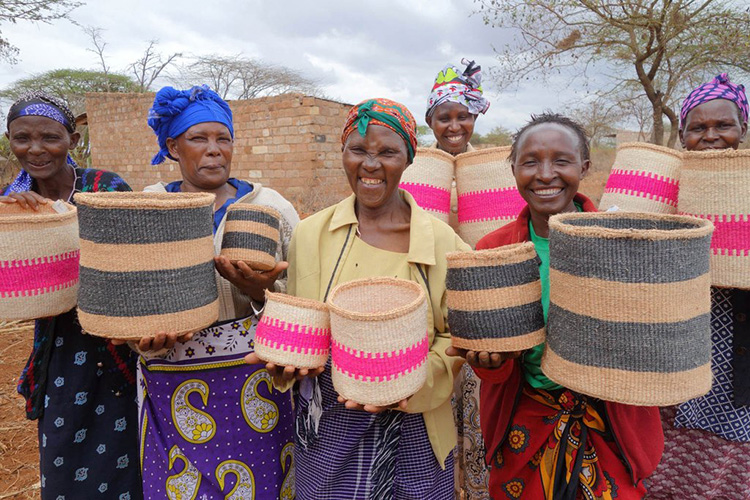
Has work given you more independence?
PENINAH: Yes! Before I joined our weaving cooperative a few years ago, I used to rely on my husband for everything we needed at home. Back then, I felt I couldn’t even ask him for money for a new pair of shoes because there were just too many more important things for the home that we needed first. But when I started weaving with our cooperative, I had the means to not only help support the family, but also to surprise my husband with new things for him, like a new hat or a pair of trousers.
FLORENCE: I never travelled much before, but since we started selling the baskets in Nairobi, I’ve realised how much I enjoy travelling. I am now able to travel all over Kenya with my work, and sometimes I take my family with me. I also don’t have to rely solely on my husband’s income in running my household anymore.
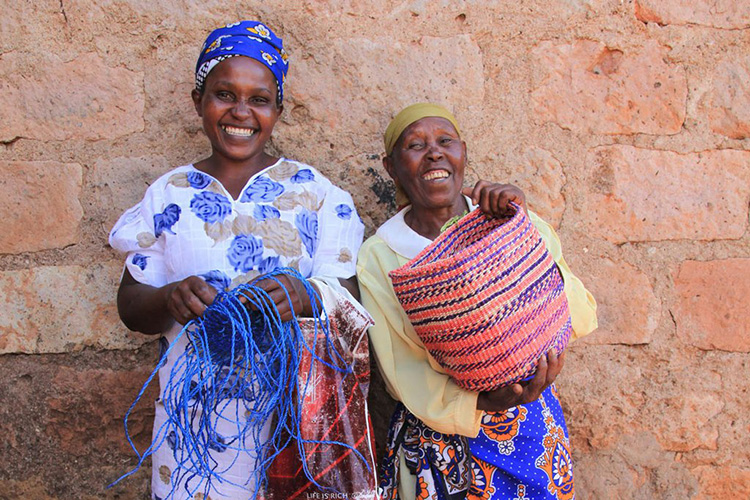
Do you feel successful being part of a growing weaving cooperative?
PENINAH: Yes, I do! Not only because this is the best way to trade with buyers, but also because of the togetherness that comes from doing something you love with friends and people who can relate to and understand what you are going through.
FLORENCE: Yes. We usually contribute part of the sales of our baskets to our cooperative. These contributions have made it possible for us to purchase a piece of land where we intend to construct rental properties or a community centre. Group members can also take out loans from the savings we have.
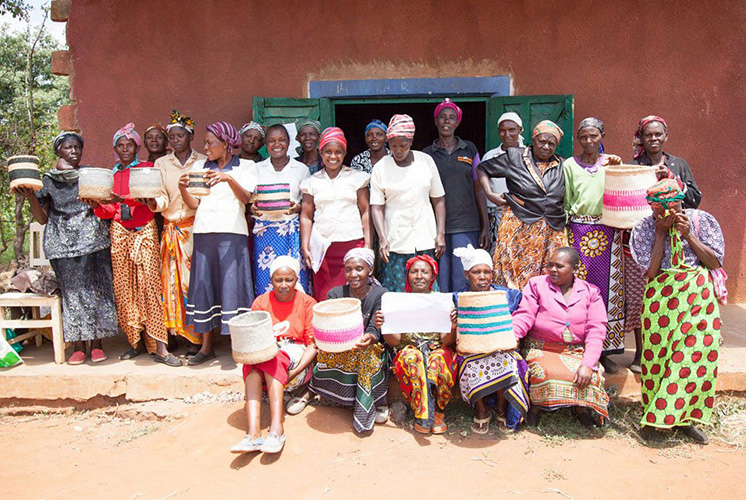
Thank you to Peninah and Florence for sharing their stories with us. Peninah and Florence belong to the Kenyan weaving cooperatives that produce our popular Linear Fusion range of woven baskets and shoppers.
On the 12th Day of Christmas
12 months of press coverage.
1619 press articles generating Circulation (Potential Viewership) of 29.7 billion, according to Meltwater press figures.
On the 11th Day of Christmas
11 steps to creating a revolution.
Blueprint for Revolution by Srdja Popovic is one of the books and reports reviewed in Fashion Revolution fanzine #001 Money Fashion Power. Through 72-pages of poetry, illustration, photography, graphic design and editorial, this collectible zine explores the hidden stories behind your clothing, what the price you pay for fashion means, and how your purchasing power can make a positive difference. Published in January and available for pre-order now.
On the 10th Day of Christmas
Business of Fashion published the 10 Commandments of New Consumerism
BoF outlined the 10 factors that define new consumerism and what this change in shopping habits could mean for fashion brands and retailers. BoF said “For decades, a brand’s only priority was to create the best possible product at the most competitive price to ensure sales. But as consumers develop a more comprehensive understanding of issues like sustainability, authenticity and transparency, brands and retailers are being forced to change the way they sell in order to survive”. Coming in at no. 1 in the 10 Commandments for New Consumerism is: Provide Transparency Into Your Business Practices.
On the 9th Day of Christmas
92 countries around the world were involved in Fashion Revolution Week in April 2016.
And even more countries have joined the movement since April. Find out what’s happening in your country.
On the 8th Day of Christmas
Over 800 Fashion Revolution events around the world.
Clothes swaps, film screenings, exhibitions, fashion shows, panel discussions, selfie walls, Fashion Question Time in the UK Houses of Parliament and more. Find out what’s happening in your country on our Events page.
On the 7th Day of Christmas
7th most successful global PR campaign in The Global SABRE awards.
The Global SABRE awards honour the world’s 40 top public relations programs of the past year. Ketchum came 7th for the Fashion Revolution Germany video, €2 T-Shirt – a Social Experiment which has received over 7.6 million views to date.
On the 6th Day of Christmas
6.30am Wake Up, 1.30am Sleep.
Garment Worker Diaries, lead by Microfinance Opportunities and funded by C&A Foundation, is gathering firsthand accounts of 540 garment workers in Bangladesh, Cambodia and India. Researchers are collecting information on what these women earn, spend, put in and take out of their savings, borrow from others, and lend to others. We are also learning about their daily schedules and what kind of conditions they’re working in at the factory. Over the course of 12 months we will have a better understanding how these garment workers survive on low pay and deal with problems such as chronic pain, harassment or illness. Find out more the daily routine of a garment worker, how much she earns and how much she spends in a week in our Money, Fashion, Power fanzine.
On the 5th Day of Christmas
5 out of the 40 brands on our inaugural Fashion Transparency Index were publishing their factory lists.
However, since April we have seen Gap, Marks and Spencer, VF Corporation (who owns The North Face, Vans, Wrangler and others) and Jeanswest publish a list of the factories where their clothes are stitched and Inditex, who own Zara, Massimo Dutti and Pull and Bear among other brands, has published a list of the facilities where its clothing is dyed, washed, printed and where leather is tanned.
The 2017 Fashion Transparency Index will cover 100 of the world’s largest fashion brands.
4 campaign hashtags used during 2016
#FashRev (general), #whomademyclothes (ask to brands) #imadeyourclothes (producer photos and stories) and #haulternative (alternative ‘hauls’) generating 156 million impressions during Fashion Revolution Week.
For 2017 our hashtags will be #FashionRevolution, #whomademyclothes, #imadeyourclothes and #haulternative.
On the 3rd Day of Christmas
3.11 million views of Fashion Revolution videos in 2016.
Fashion Revolution Brasil’s Fashion Experience: o outro lado da moda, Fashion Revolution Germany’s The Child Labour Experiment, #Haulternatives by Cutie Pie Marzia and Maddu, plus over 60 more #Haulternative and Love Story videos posted by people around the world.
Find out how to make your own #Haulternative and Love Story videos on our website.
On the 2nd Day of Christmas
2 founders of Fashion Revolution, Carry Somers and Orsola de Castro were named amongst the most influential people in London 2016.
Carry Somers and Orsola de Castro were listed in the Evening Standard’s Progress 1000 Awards in the Equality Champions category which included the Duke and Duchess of Cambridge, the Duchess of Cornwall, David Beckham, Richard Gere and Stephen Fry,
On the 1st Day of Christmas
One global campaign changing the fashion industry.
Please be a part of the Fashion Revolution and help to make our voice even louder in 2017. Be Curious. Find Out. Do Something About It.
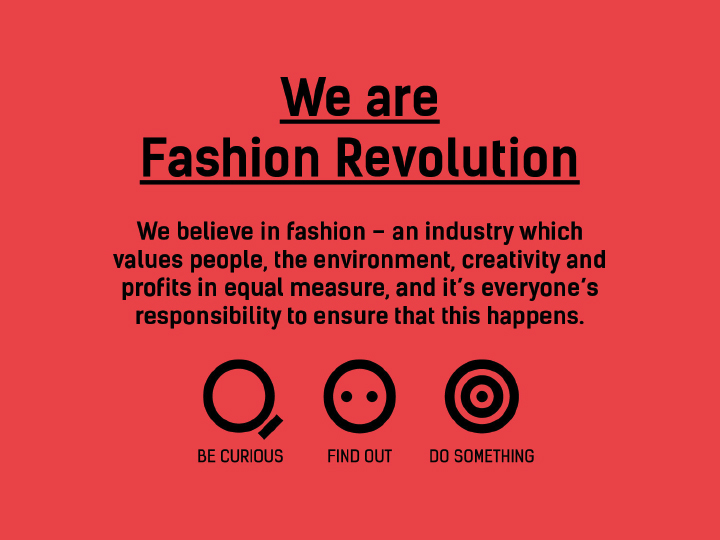
Help us launch our 2017 theme MONEY, FASHION, POWER.
Please donate to keep strengthening the movement.
Fashion Revolution’s theme for 2017 is Money Fashion Power which will be exploring the flows of money and structures of power across the fashion supply chain.
“There is nothing more important than performance, and fashion brands have to perform because of this greed – not a percent or two per year, but at least 10 percent quarterly, even when we’re talking about billion-dollar businesses. There is no end to the greed, so the brands are spreading themselves thin”
said trend forecaster Li Edelkoort in an interview with Deutsche Welle published this week.
Tomorrow is the fourth anniversary of the Tazreen Fashions fire in Dhaka Bangladesh. All of the garment workers were on an overtime shift to complete an urgent order when the fire alarm sounded, but managers ordered them to carry on working. As the smoke and fire spread through the building and workers eventually tried to escape, they found that iron grilles barred the windows and the collapsible gate was locked. None of the fire extinguishers appeared to have been used which suggests workers had not received fire safety training. 112 workers died and more than 200 were injured. The official who led the inquiry into the fire said
“Unpardonable negligence of the owner is responsible for the death of workers.”

After the Tazreen fire, factories were told to replace collapsible gates and lockable doors with fire-proof doors so there was always a safe exit point in the event of a fire. In the Bangladesh Accord’s initial inspection of 1600 garment factories, it was found that over 90% had lockable, collapsible gates. According to industry insiders, around 40% of all operational garment factories still have these gates, four years later.
A new report published this week Dangerous Delays on Worker Safety found that of the 107 factories labelled “on track” by The Alliance for Bangladesh Worker Safety, 99 were still falling behind in one or more safety categories. In light of Li Edelkoort’s observation that brands are spreading themselves thin, it comes as little surprise to find that brands in the Alliance, which includes brands such as Walmart, Target, Gap inc, VF Corporation (which owns Lee, Wrangler, The North Face, Vans, Timberland and others and has just published its factory lists) have yet to put in place the life-saving safety changes they pledged following the Rana Plaza disaster, which occurred five months after the Tazreen fire. 62% of factories still lack viable fire exits, 62% do not have a properly functioning fire alarm system and 47% have major, uncorrected structural problems. Deadlines for these safety measures to be implemented were supposed to be 2014/15 but have now been moved to 2018, the end of the 5 year period over which the Alliance extends.
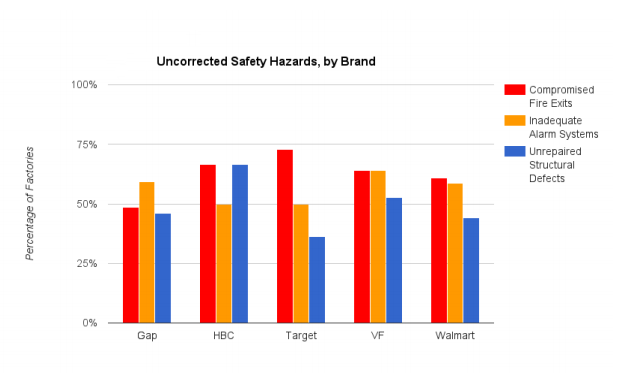
Are brands and factory owners really so concerned with the bottom line that they cannot afford to prioritise the installation of something so basic to worker safety as a fire-proof door and the removal of locks from existing doors?
Since the Tazreen fire and Rana Plaza disaster, human rights issues are certainly more visible than ever before and there is ongoing pressure on global fashion brands to become more transparent. Companies are now being held to a higher standard and they are cognisant of this change. During Fashion Revolution Week in April, over 70,000 fashion lovers around the world asked brands #whomademyclothes on social media, with 156 million impressions of the hashtag. G Star Raw, American Apparel, Fat Face, Boden, Massimo Dutti, Zara, Jeanswest and Warehouse were among more than 1250 fashion brands and retailers that responded with photographs of their workers saying #Imadeyourclothes. Read more about our impact here.
However, the harsh reality is that basic healthy and safety measures still do not exist for millions of people who make our clothes and accessories. On 11 November 2016, 13 people died in a factory making leather jackets on the outskirts of Delhi. The front of the building had been shuttered with a metal grill which prevented the workers escaping the blaze. Deadly accidents are still commonplace in fashion supply chains and not enough has been done by brands and retailers to prevent more fashion victims; victims of neglect, oversight and the pursuit of profit.
Scott Nova, executive director of the Worker Rights Consortium says:
“What motivated Walmart and Target to do the right thing is public embarrassment. We are three and a half years on [from Rana Plaza] and they assume memories are fading.”
We have the power and, I believe a duty, to let these brands know that our memories of the Rana Plaza disaster, the Tazreen Fashions fire, and the many other tragedies which have ocurred in the name of fashion, are not fading. By asking the question #whomademyclothes we are applying pressure in the form of a perfectly reasonable question that fashion brands should be able to answer. We are asking them to publicly acknowledge the people who make our clothes; millions of people working in factories, fields, homes and other hidden places around the world. Tragedies like the Tazreen Fashions fire are preventable, but they will continue to happen until every stakeholder in the fashion supply chain is responsible and accountable for their actions and impacts.
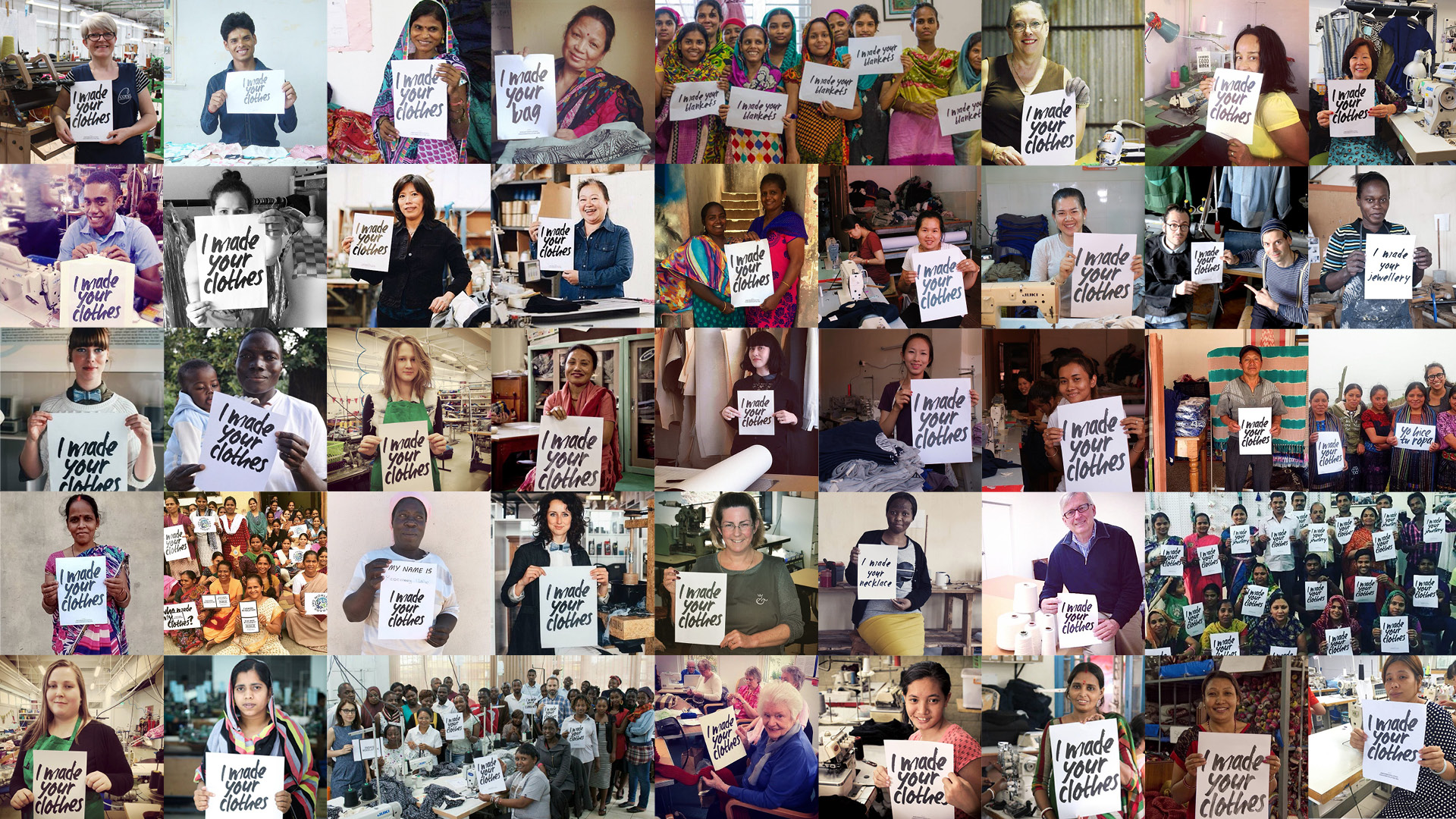
As Li Edelkoort said, fashion brands are spreading themselves thin. As their customers, we can help make sure they start to get their priorities right and redress the imbalances of power in the fashion supply chain.
Header photo credit: A young garment worker by Claudio Montesano Casillas
Four million garment workers, mostly women, toil in 5,000 factories across Bangladesh, making the country’s $25 billion garment industry the world’s second largest, after China.
Garment workers generally are paid low wages with few or no benefits and often struggle to support their families. Many risk their lives to make a living.
On November 24, 2012, a massive fire tore through the Tazreen Fashions Ltd. factory in Dhaka, Bangladesh, killing more than 110 garment workers and gravely injuring thousands more.
In the wake of this disaster, garment workers throughout Bangladesh are standing up for their rights to safe workplaces and living wages. With the Solidarity Center, which partners with unions and other organizations to educate workers about their rights on the job, garment workers are empowered with the tools they need to improve their workplaces together.
Learn more about the Solidarity Center’s work in the global garment industry
DISASTER STRIKES TAZREEN
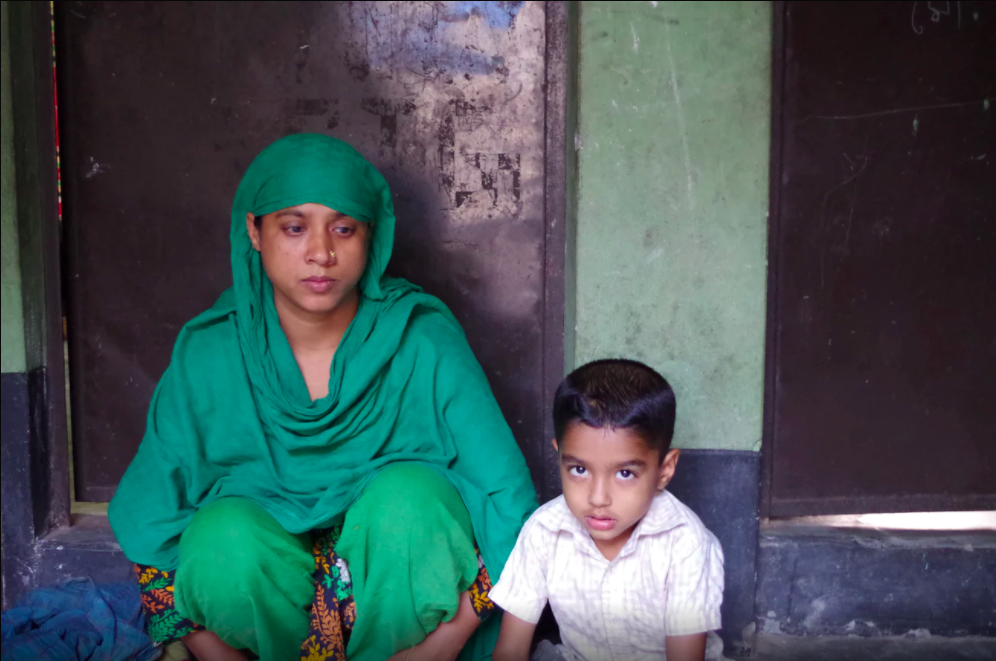
On November 24, 2012, women and men working overtime on the Tazreen production lines were trapped when fire broke out in the first-floor warehouse. Workers scrambled toward the roof, jumped from upper floors or were trampled by their panic-stricken co-workers. Some could not run fast enough and were lost to the flames and smoke.
Hundreds of those injured at Tazreen, like Tahera (above), will never be able to work again. Survivors say they endure daily physical and emotional pain, and often are unable to support their families because they cannot work and have received little or no compensation.
Some 80 percent of export-oriented ready made garment (RMG) factories in Bangladesh need improvement in fire and electrical safety standards, despite a government finding most were safe, according to a recent International Labor Organization (ILO) report.
TAZREEN NOT UNIQUE
The Tazreen fire was not an isolated incident.
Months after the Tazreen disaster, more than 1,000 garment workers were killed when the Rana Plaza building collapsed. Workers were forced to return to the building despite the warnings of structural engineers that the building was unsound.
In the four years since Tazreen, fires, building collapses and other tragedies have killed or injured thousands of garment workers in Bangladesh, according to data collected by the Solidarity Center.
FACTORIES CAN BE MADE SAFE
The Tazreen fire and Rana Plaza collapse were preventable. Workers at Tazreen and Rana Plaza did not have a union or other organization to represent them and help them fight for a safe workplace.
Without a union, garment workers often are harassed or fired when they ask their employer to fix workplace safety and health conditions. They are not trained in basic fire safety measures and often their factories, like Tazreen, have locked emergency doors and stairwells packed with flammable material.
Unions have helped to improve these conditions.
They have joined together to form workplace unions and bargain for safe working conditions, better wages and respect on the job.
UNIONS SAVING LIVES
Worker voices have yielded real results.
Over the past few years, the Solidarity Center has held fire safety trainings for hundreds of garment factory workers. Workers learn fire prevention measures, find out about safety equipment their factories should make available and get hands-on experience in extinguishing fires.
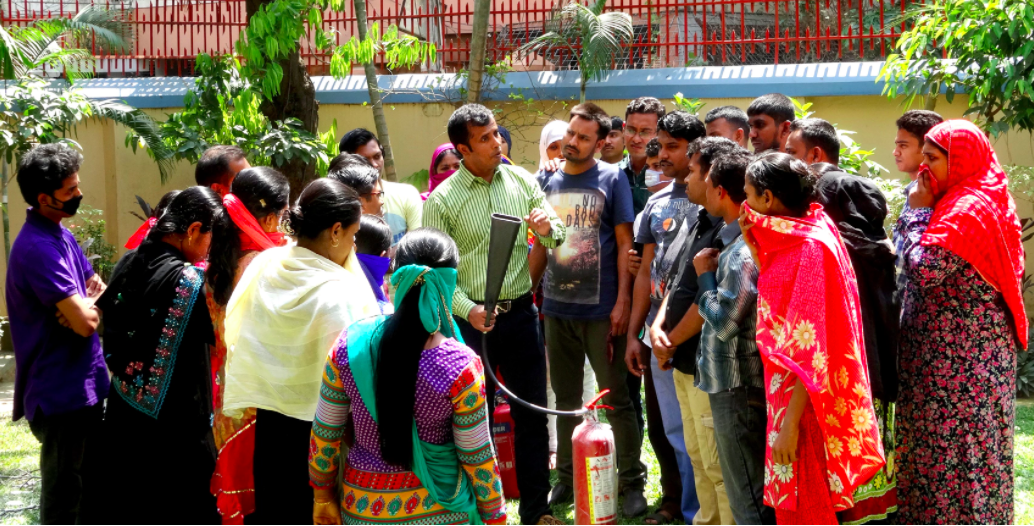
When women workers form unions, they improve their working conditions. Through Solidarity Center workshops and leadership training, more women are running for union office. Women now make up more than 61 percent of union leadership in newly formed factory level-unions.
CHANGE IS POSSIBLE
Salma (below), a garment worker, and her co-workers faced stiff employer resistance when they sought to form a union. With assistance from the Solidarity Center and the Bangladesh Garment and Industrial Workers Federation (BGIWF), to which their factory union is affiliated, workers negotiated a wage increase, maternity benefits and safe drinking water. The factory now is clean, has adequate fire extinguishers on every floor, and a fire door has replaced a collapsible gate.
To learn more about garment workers in global supply chains and how the Solidarity Center supports them, visit www.solidaritycenter.org.
La semana pasada en Copenhagen Fashion Summit, Juan Orlando Hernández, Presidente de Honduras hizo la siguiente invitación: “Si quisieran ir a Honduras a conocer por ustedes mismos, yo los recibiré personalmente en el aeropuerto”.
Ignorando las molestias en la parte posterior del auditorio que llamaron “Señor Presidente, detenga a los militares de asesinar a activistas” el Presidente de Honduras lanzó para promocionar el país como líder de exportación de prendas a Estados Unidos de América y tiene el objetivo de exportar más al mercado Europeo. La industria del vestir y textil es parte del nuevo plan Honduras 2020, un proyecto de $3.4 miles de millones, que tiene como meta hacer que Honduras sea la elección de muchas marcas para proveer de forma sustentable. “Haremos esto mediante un verdadero modelo sustentable, enfocándonos en factores clave como condiciones laborales sustentables, protección del medio ambiente, utilizando la última tecnología para reducir el consumo de los recursos, cambiando los combustibles a energías renovables” mencionó Juan Orlando Hernández, quien continuaba enfatizando el objetivo de su país por tener el 80% de sus energías de origen renovable para el 2020.
El compromiso por reducir los combustibles no renovables claramente no exenta al mismo Presidente, quien rentó un jet de lujo para ir a la conferencia de Vista Jet, entre sus clientes tienen a celebridades como Beyonce y los Beckham. La presentación del Presidente le costaría $360,000 viajando solo, de acuerdo con la información del sitio, dando esto decenas de críticas en la página de Facebook de Copenhagen Fashion Summit.
El Presidente seguía mencionando a las 1200 personas del público haciendo hincapié en cómo su país toma muy en serio el lado social de la sustentabilidad. “Gozamos de un excelente y seguro ambiente de trabajo y cuidar a nuestra gente es nuestra principal atención y responsabilidad”.
El Presidente llegó a decir que Honduras era “el segundo lugar más justo para la producción de prendas de vestir”. Después de un correo electrónico al Americas Apparel Producers’ Network, he recibido una respuesta del Director General Mike Todaro quien aclaró que el Presidente se refería al AAPN Asia/Americas Report Card. Honduras llegó al 2º lugar en el informe. Sin embargo, por lo que yo puedo ver a partir de la información en línea, sólo uno de los 8 criterios se refiere a cumplimiento social y sostenibilidad y los otros 7 incluyen elementos como el coste, la velocidad y el desarrollo de productos.
De acuerdo con War on Want, 53% de los trabajadores en maquilas o fábricas de ropa, en Honduras son mujeres jóvenes de comunidades desfavorecidas que tienen poca educación. La mayoría no son conscientes de sus derechos, la explotación es frecuente y los trabajadores están desmotivados a formar sindicatos. Solidarity Center dice que los sindicalistas son constantemente amenazados, intimidados, extorsionados e inclusive asesinados, y los criminales rara vez puestos a disposición judicial.
31 sindicalistas han sido asesinados y 200 heridos en ataques desde el 2009, de acuerdo con la federación de sindicatos AFL-CIO. De hecho en Marzo del año pasado en Departamento Americano del Empleo publicó un informe documentando abusos a los derechos de los trabajadores en Honduras. El informe detalla muchos casos donde los empleados hondureños relacionados en actos de discriminación anti-sindicalistas, imponiendo pactos anti-sindicalistas para frustrar negociaciones colectivas, así como casos donde no se pagan los salarios, exigir horas extras y numerosos abusos en cuanto a salud y seguridad laboral.
En promedio los salarios de las maquilas son equivalentes al 37% del costo de la canasta básica de Honduras. Además la diferencia entre los salarios de los trabajadores de maquilas y los de las otras industrias está en crecimiento. La competencia a la base continuará a menos que tomemos un acercamiento para tener un salario para vivir, trabajando con los gobiernos y sindicatos para ajustarlo de manera legal, imponiendo un salario mínimo en su país que asegure que los empleados puedan cubrir sus necesidades básicas.
Sin transparencia en la cadena de suministro y sin compromiso de los dueños de las marcas de moda y las fábricas de invertir en mejores condiciones laborales, los salarios y derechos de los trabajadores se mantendrán desempoderados y no podrán negociar de manera independiente sus condiciones laborales.
La industria textil y de la moda sin duda a traído trabajos al país, pero no son buenos empleos. Frecuentemente se discute si cualquier trabajo es mejor que no tener trabajo, pero no hay motivo por el cual no crear buenos empleos, trabajos con dignidad, sin tener un impacto en el precio de venta. El hecho de que la gente está en una situación difícil no es motivo para explotarla. Una Fashion Revolution es necesaria dado que las marcas, incluso las mejores marcas quienes están trabajando de manera proactiva hacia un salario para poder vivir, nunca cambiarán el sistema.
Deberían venir a ver si estos empleos realmente ayudan a las personas a salir de la pobreza, con los salarios que reciben, sin derechos laborales. ¡No tienen un lugar para sentarse a comer, tienen que comen en las calles y regresar al trabajo! ¡En verdad se creyeron lo que este hombre fue a decir a su evento! Comentó RS Briose en la página de Facebook de Copenhagen Fashion Summit.
En respuesta a RS Bruise y otros ciudadanos Hondureños quienes comentaron sobre la visita de Juan Orlando Hernández a Copenhagen Fashion Summit: Sí, visitaremos y veremos con nuestros propios ojos #whomademyclothes #quienhizomiropa. Iremos a ver si Honduras es realmente uno de los lugares con las mejores condiciones sociales en el hemisferio oeste para la producción de ropa y textiles, tal y como se indica en la presentación del Presidente.
Estoy lista para aceptar el ofrecimiento del Presidente de Honduras para visitar las fábricas de su país y confío en que mantendrá su palabra. Presidente, nos vemos en el aeropuerto.
